The Bull
Ruby Raze is the equal opportunity ass kicker
revolution in the ring on a mission back home
Foundation helps women warriors with their four biggest needs

the amber rose
slutwalk
women march to end sexist culture
Fall 2017 | Winter 2018
Letter From the Editor
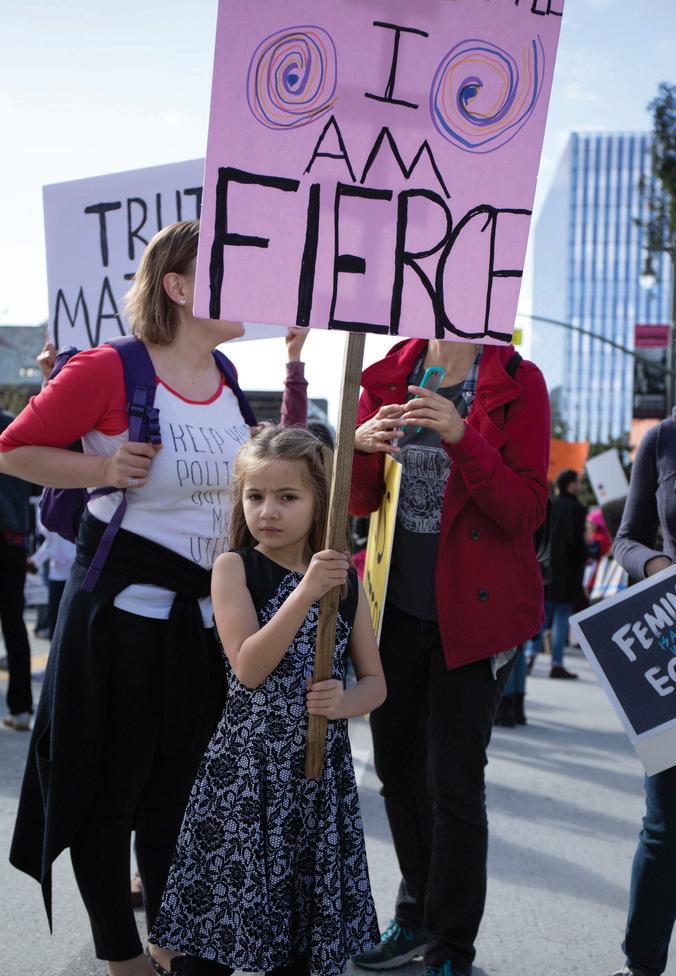
Dear Readers,
Welcome to the women’s issue of the Bull Magazine.
I have thought long and hard about what I wanted this magazine to be over the course of the semester. There are so many things that women are facing in our present society and culture that the possibility of what we could focus on is infinite. We only have 36 pages. Therefore, my hope is that when you read the stories within this magazine, you will find a wide a range of extraordinarily strong people who are using their identity as women to make a difference in their lives and beyond.
As someone raised by a single mother who encouraged me to be involved in women’s rights, I find it difficult when I get the blanketed response of, “I have never experienced it so it must not be real.”
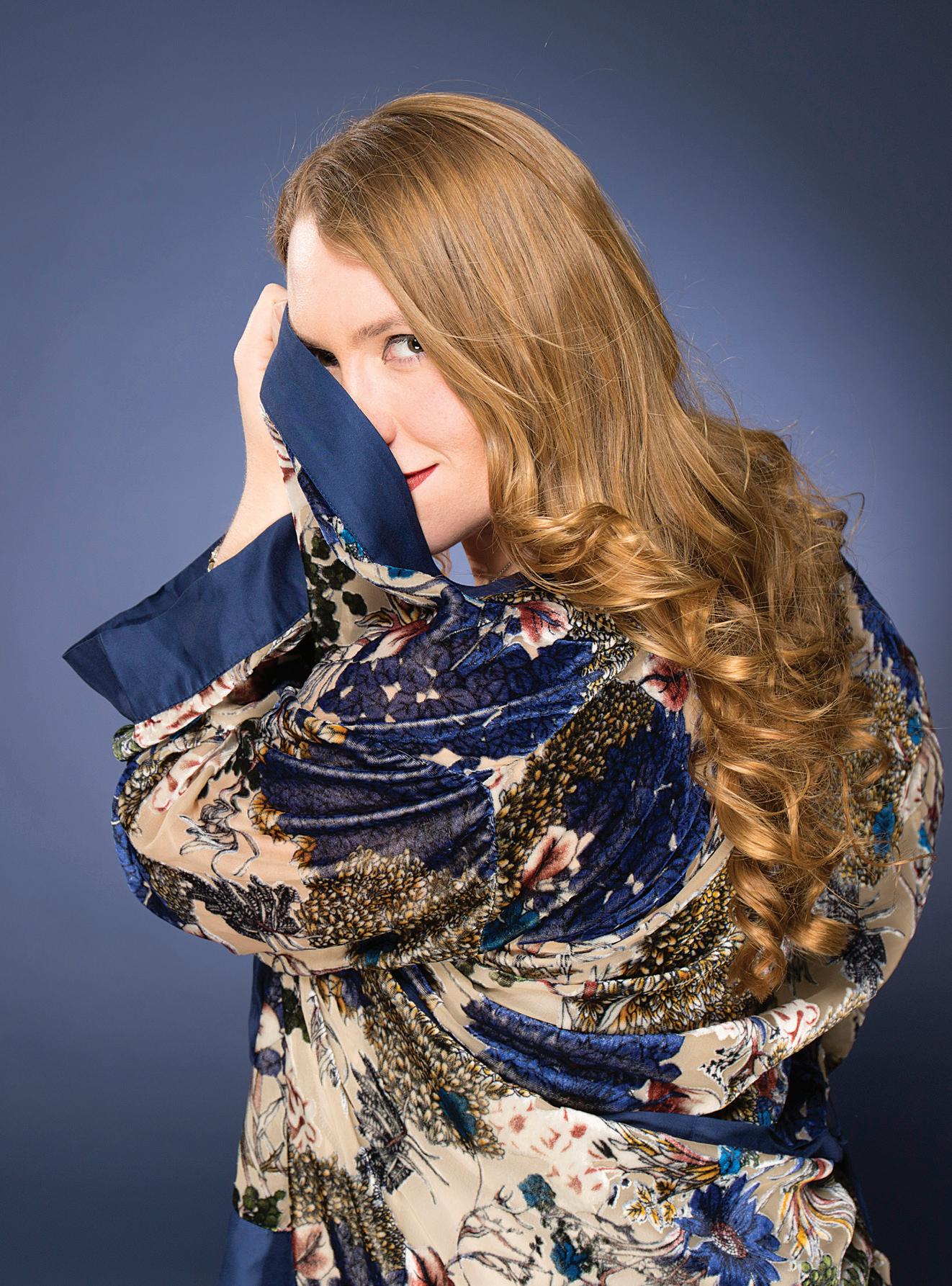
I think the more we open our minds and listen to how women experience the world, that we not only will understand what it is like to be female - but what it is like to be human. At the end of the day that is all we are.

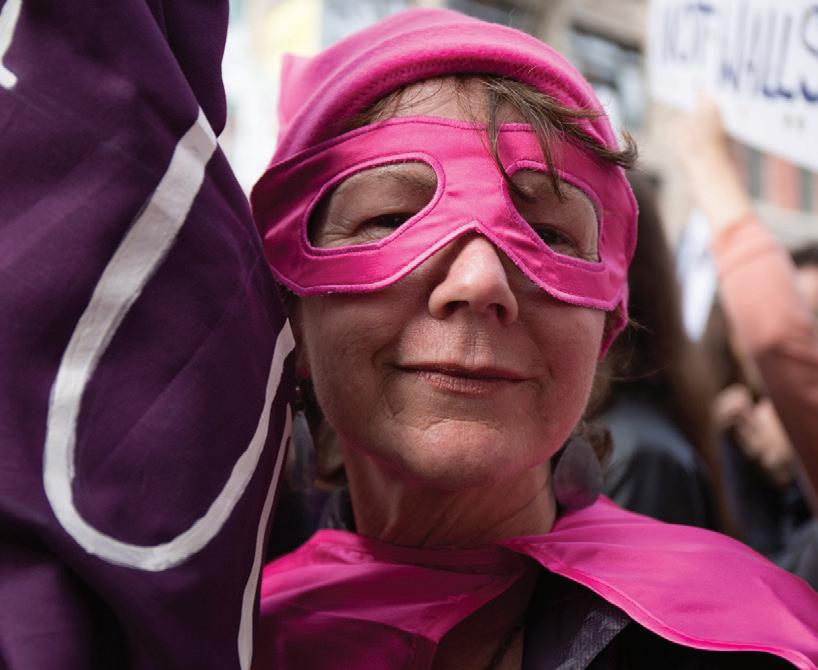 -Taylor Arthur / Editor-in-Chief
-Taylor Arthur / Editor-in-Chief
2 | BULL Magazine
Front cover model: Sandy Luque Photo Illustration by Taylor Arthur
Back cover: Photo by Mohammad Djauhari Illustration by Taylor Arthur
Q&A:
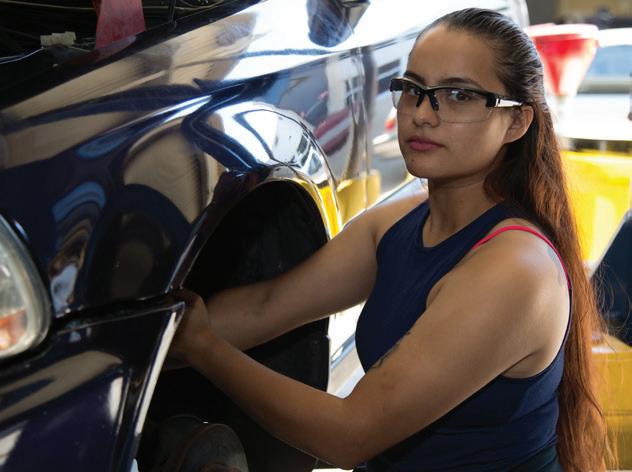
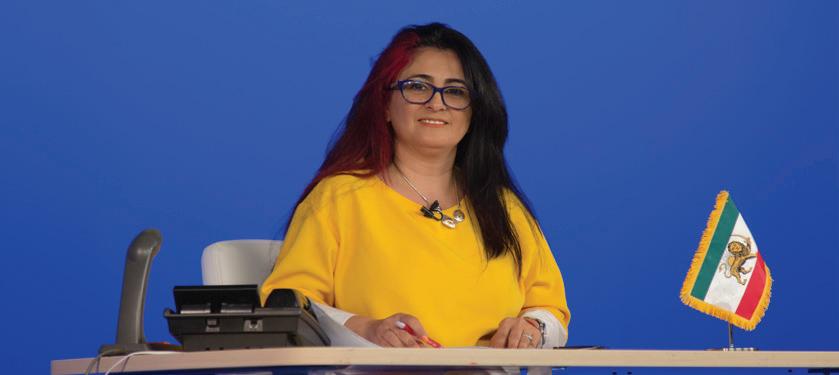
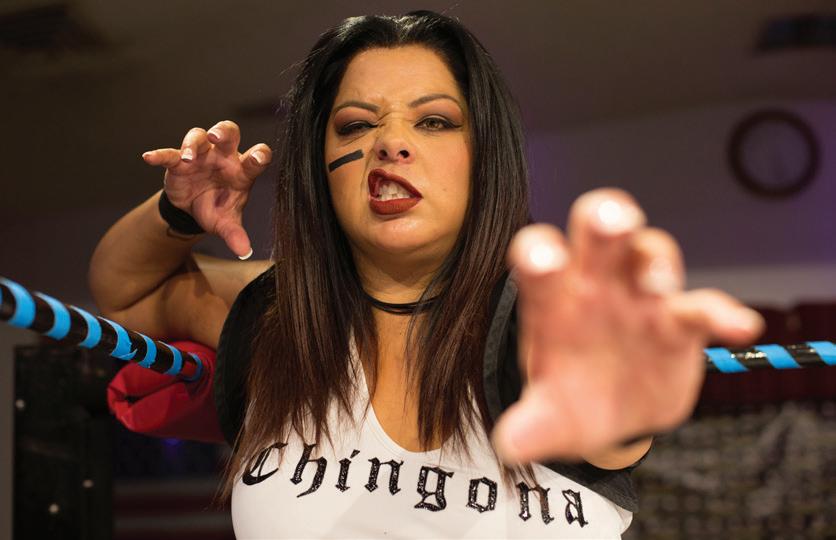
Philosophy Professor Paul Hicks discusses male feminism, how our culture views women and what men can do about it.

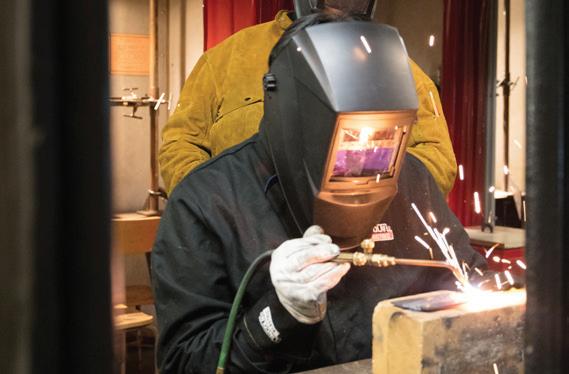
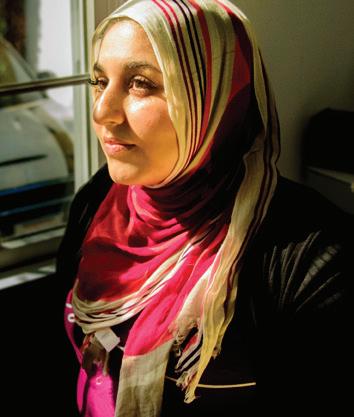
Los Angeles community struts the streets to end slut shaming at the annual 2017 Amber Rose SlutWalk in Downtown LA.



Women’s Issue | 3 4THe ring of her dreams 8Serving those who served A stylist gives back to the female veteran community through makeovers - inside and out. 10The Audacity to be me 12The Fight is Female A mission at home to uplift women veterans through an organization in Southern California. 15Home Away from Home A social worker’s passion to help young women provides a safe haven for girls struggling with mental health and trauma. 18Firing Up the Future 21Woman with the News A Mecca in Lincoln Heights 22 25Greasing the Wheel Column: Show up & Sit down 27 A column written by a male feminist.
Got Feminism? 28
new Way of Life 30
32
A
SlutWalk
the Staff 34
Women’s Issue
Meet
What’s Inside The
The Ring of Her
Ruby raze and the evolution of the women’s revolution
 Story by Joshua Manes
Story by Joshua Manes
Her Dreams
The days of divas are done.
No longer are the women of professional wrestling considered a side act and merely eye candy. They are now looked at for their athleticism and in-ring prowess on the same level as their male counterparts.
This summer, World Wrestling Entertainment, the largest and most well known wrestling company, held the inaugural Mae Young Classic, a women’s tournament featuring talent from around the globe.
Prior to the start of the first night, WWE Executive Vice President of Talent, Live Events and Creative Paul Levesque, better known to wrestling fans as Triple H, addressed the fans, talking about the discrepancy between the sexes in wrestling. While both male and female competitors make the same sacrifices, historically there is a lack of payout for female competitors.
“The women saw what happened in that ring and they thought, ‘I’ll sacrifice everything to live that dream, for one shot to ride that rainbow,’” Levesque said. “And they rode that rainbow even though there was no pot of gold. Until now.”
The women’s revolution began before the WWE coined the phrase. On the independent circuit, the popularity has been swelling for years. Multiple all-female promotions have popped up, and other promotions often feature intergender matches, truly putting the sexes on the same stage.
The main event at the Santino Bros. Heavy is the Crown is one such match. Hours before fans fill the Downey Elks Lodge, the main event participants discuss the details of their triple threat match for the heavyweight championship. As they work out spots in the ring, discussing pacing and distance, Ruby Raze instantly stands out from her opponents Tyler Bateman and Brodi King. This is nothing new for Raze, who has earned herself the moniker “The Equal Opportunity Asskicker.”
 Photos by Taylor Arthur
Photos by Taylor Arthur
“Everyone’s a wrestler here, there is no difference,” said Joey ‘Kaos’ Munoz, one of the founders of the Santino Bros. Wrestling
Academy and 19-year veteran of the squared circle. “That’s one of the reasons that we don’t have a women’s title.”
Raze has competed in the ring for nearly four years and is the current FIST Combat heavyweight champion as well the Oddity Wrestling Alliance women’s title holder.

While many, including Raze, believe it was the indies that influenced WWE’s decision to embrace women’s wrestling, she sees the giveand-take that influences the entire industry.

“Because places like the WWE are putting a focus on women’s wrestling right now, it’s giving more of a place in the indies,” Raze said. “You see more female promotions sprouting up and you see more female matches. Before you’d only see one female match per card and it’s almost like a special attraction but now you’re seeing places do two to three on a card.”
The image change of women’s wrestling has not only offered opportunities in the industry, but it has also brought in new, young female fans.
Robert Mejia has been a wrestling fan for years. His fandom grew as a teenager, during what was known as “the attitude era” Robert attends shows with his 7-year old daughter Hannah frequently.
“So much better now than when I was in my teens,” Robert Mejia said. “If it was still like that she wouldn’t be watching. It’s an actual show. We’ve been to all-women shows. It’s something for her to look up to.”
Hannah Mejia has a podcast, ‘Doing the Orton,’ on which she has interviewed many of the Southern California based wrestlers, including Raze.
Raze says that it is the interactions with these young fans that help her remember why she is in an industry that can leave its workers broken and in pain.
“It’s akin to being in a bad relationship because you keep going back because you live
it, it consumes so much of your life,” Raze said. “You’re almost not sure what’s going on, and then you see this little girl come up to you and she gives you a hug. She’s like, ‘thank you, I love watching you.’”
Wrestling wasn’t originally in Raze’s life plans. She first came around the industry while pursuing a career in visual journalism.
“Sports and music was my focus,” Raze said. “I started doing wrestling photography and was around the guys a lot.”
Raze says she began dating one of the wrestlers and began hanging around more often, always taking pictures at shows.
“One of the wrestling promoters came up to me. He’s like you, you’re always here you should do something in the business,” Raze said. “I was like, I kind of am I’m taking pictures. He’s like, no no no you’ve got to get out there.”
Raze began as a manager for a three-man stable consisting of Bateman, Funnybone and Ryan Drago, who later appeared in WWE as Simon Gotch. After the group split up, Raze stayed on managing Bateman.
For five years she stayed on the outside, training here and there with Bateman.
“It’s not a traditional system to just jump in wrestling and be on the road and learn off the cuff,” Raze said. “I was doing a lot of sweeping of the rings before matches and then getting in there with Tyler Bateman and whoever else would teach me.”
Her first match was a tag match alongside Bateman. After that match, she had her first opportunity in the ring on her own.
“I wrestled my very first singles match without a whole lot of formal training. All my training was on the road for five years,” Raze said. “That match went really well so I decided it was time to go get real training.”
 Ruby Raze prepares to use a chair in the main event at the Santino Bros. at the Downey Elks Lodge in Downey, Calif.
Ruby Raze delivers a German suplex to Tyler Bateman in the main event at the Santino Bros. Wrestling Heavy is the Crown event at the Downey Elks Lodge in Downey, Calif., on Friday, Sept. 22, 2017.
Ruby Raze prepares to use a chair in the main event at the Santino Bros. at the Downey Elks Lodge in Downey, Calif.
Ruby Raze delivers a German suplex to Tyler Bateman in the main event at the Santino Bros. Wrestling Heavy is the Crown event at the Downey Elks Lodge in Downey, Calif., on Friday, Sept. 22, 2017.
Maybe the decision shouldn’t be a surprise. Raze comes from a family of grapplers, and grew up watching G.L.O.W. long before Netflix was a even a concept.
“I just come from a line of fighters,” Raze said. “My brother is a state champion wrestler. My dad was a wrestler and a boxer. My grandfather was a wrestler and a boxer. Fighting has kind of always been in the family. When I was 10 I took my first suplex by my brother.”
That first bump didn’t go so well for Raze. She remembers hitting her foot on the table, it bleeding and her screaming.
And after a few minutes she was ready to try it again.
When it came time for her to begin her formal training, Raze went to Munoz at Santino Bros. Wrestling Academy.
“I kind of had a grasp on a lot of wrestling, especially being ringside and watching it for five years,” Raze said. “I always did the stand there, listen and keep your mouth shut and ears open. So I went in there and I already knew most of what they were doing.”
Munoz remembers being impressed with Raze’s in-ring skills when she began her training.
“What we simply did was just polish her off,” Munoz said. “We really didn’t have to teach her the moves per se, maybe just the psychology of the wrestling”
Despite her previous experience, Raze didn’t know what to expect that first day.
“I didn’t expect to go in and do 200 squats off the bat, 100 pushups and all the lunges, and then do all the bumps and just start working on it,” Raze said. “Honestly, it felt more like boot camp than it did wrestling.”
Ruby continued to go to school during her first years as a wrestler, but realized where her heart was.

“I got my degree, I started using it and I decided it was soul sucking and I just wanted to wrestle,” Raze said. “So I took a bunch of bookings and I was flying around going places
here and there. Working is not for me right now I just want to be a wrestler.”
Though it may not be a regular nine-tofive, wrestling keeps Ruby busy all week. Her bookings are usually for Thursdays, Fridays, Saturdays and Sundays, sometimes all.
“I create my own merch, I do my own graphics and logos,” Raze said. “I try to merchandise myself and try to brand myself.”
While the training and in-ring action might have gotten easier for Raze to handle over the

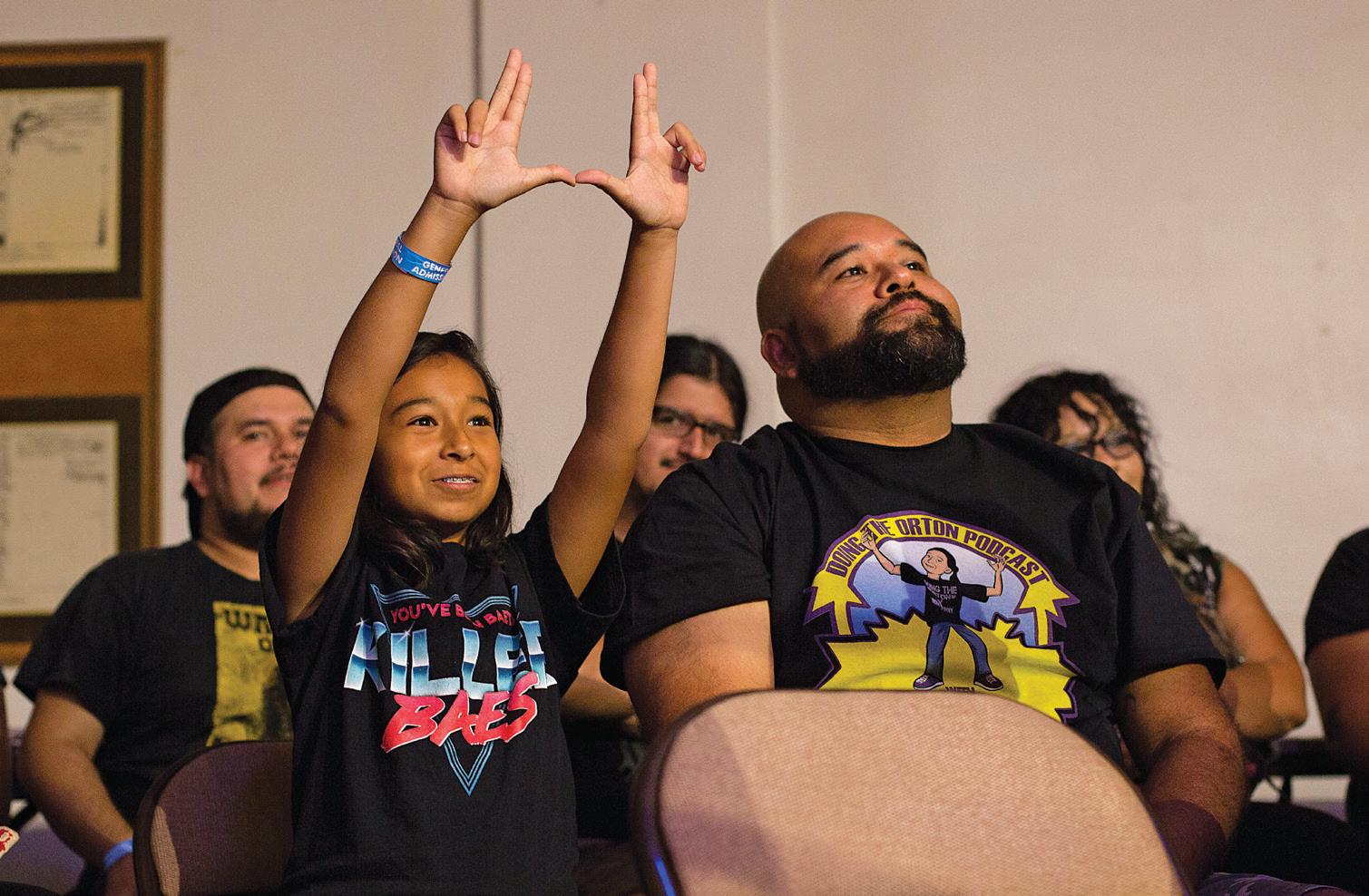

years, she makes no bones about the harsh grind that is working in the industry.
“It’s not sunshine and happiness, there’s a lot of hurt. There’s a lot of body aches and pain. There’s a lot of missing weddings, funerals, birthdays,” Raze said. “A lot of times you lose a lot of your real friends outside of business. Something that was said to me recently was, ‘I feel like I got you addicted to heroin and told you to have a good life.’”
Hannah Mejia sits in the crowd with her father Robert at the Santino Bros. Wrestling Heavy is the Crown event at the Downey Elks Lodge in Downey, Calif.
Heather Monroe delivers forearms to the back of Delilah Doom in their match for the Sabotage championship at the Santino Bros. Wrestling Heavy is the Crown event.
Ruby Raze backs Tyler Bateman into the ropes in the main event at the Santino Bros. Wrestling Heavy is the Crown event at the Downey Elks Lodge in Downey, Calif.
serving those who served
non-profit organization provides veterans with makeovers — that matter
 sTORY BY Natalie Miranda
Photos by Magdalena Bleu BRIGGS
sTORY BY Natalie Miranda
Photos by Magdalena Bleu BRIGGS
Inside a Los Angeles salon, wooden floors and a posh interior give the room an inviting atmosphere. The hairdresser stations are spaced uniformly, with dark espressocolored leather seats and tall narrow mirrors that line either side of the walls. Colorful shampoo bottles in pastel shades of pink, lilac, mint, yellow and cream are displayed neatly on shelves like pieces of art in a gallery.
Army veteran Keniquea Mitchell entered through the doors, and after a few steps she stopped dead in her tracks as tears continuously streamed down her flushed cheeks. Wiping her tears away with the sleeves of her sweater, she was met warmly with an embrace into the arms of Michael
John Derricott, a sandy-haired man with kind eyes.
After her tears subsided, a rich brown robe was draped around her body, as she tied the strings into a bow around her waist. She sat patiently in a hairdresser chair awaiting her transformation.
Makeovers are Derricott’s speciality, and serving women, while lifting the spirits of those who have served our country, is representative of his life’s work.
Derricott, founder and CEO of Makeovers That Matter, said he felt something shift in January of 2012. He closed his book for appointments on Tuesdays at his West Hollywood Ra Hair House Salon and opened his heart to those that needed his services the most by cutting hair for
8 | BULL Magazine
Keniquea Mitchell sits at the salon station before getting her hair colored by Michael Derricott on Thursday, Sept. 21, 2017, in Sherman Oaks, Calif. at Headbetter Salon.
homeless women at Gettlove in Hollywood, a transitional facility that helps the homeless enter permanent housing.
Derricott did some soul searching for redirection, and found himself through deep meditation. He decided he wanted to devote himself to helping economically challenged women.
“My intention, as this world began to grow around me, was simply to empower women and do charity work,” Derricott said.
On May 5, 2013, Derricott put together a pilot program that helped women with spiritual counseling, interviewing skills, wardrobe styling and complete makeovers. Of the 19 women that originally registered with the program, 15 were veterans.
“I love my country. I’m a blue blooded American and super conservative when it comes to my country,” said Derricott. “I thought to myself, ‘oh my gosh, these women need to move to the front of the line.’ This is the community that I was meant to serve.”
Derricott created the Mindset Program in the fall of 2014, which provides traditional job training, cover letter writing, resume, social media, LinkedIn and research opportunities to women in the military.
Mitchell, 33, first joined the army when she was 18 years old and served for eight years.
“It was hard, because you change in the Army, and people back at home don’t understand,” Mitchell said. “I didn’t even understand that I had Post Traumatic Stress Disorder when I came back. My family didn’t know what was wrong with me.”
Despite her struggles, Mitchell said she appreciates the opportunity Makeovers That Matter is giving her.

As tears began to well up in Mitchell’s eyes, she said she wouldn’t be involved with Makeovers That Matter if she hadn’t sent handwritten letters to the organization.
“That’s part of the reason I’m crying,” Mitchell said. “I can’t believe I’m here right now. This is a dream.”
Gladys Berry joined the Air Force at 17 years old. She was raped shortly after enlisting.
Memories of her sexual assault had been suppressed after the incident. However, Berry said routine therapy sessions and medication help her to cope.
“I’ve had to fight my family and friends and let them know this is something that is working for me,” Berry said. “So I do it, and I encourage any woman that needs help
to seek help. Don’t let anybody tell you it won’t work.”
Berry said Makeovers That Matter helped her improve her perception of herself.
“When I reached out to Makeovers That Matter, I was so happy when they told me I was chosen for a makeover, because I feel like I changed from the inside,” Berry said. “But my outside isn’t representative of that change. So, I just want my inside and outside to match.”
Derricott said the organization expanded their reach beyond veterans to military caregivers and spouses.
“These are women who are completely overlooked and underserved. So, I want to do everything I can to help them get jobs and be self sustaining and get them on their feet,” Derricott said.
J. Hill’s Staffing Service Recruiter Molly Winawir believes that based on her psychology background, Post Traumatic Stress Disorder can stand in the way of fulfilling career goals.
“When people have PTSD, it’s difficult to maintain relationships in a certain way, and that can translate into the workplace. So, it can have to do with effective communication, or ability to let someone in, and establishing a connection when you have your own things to work through. ”
Army veteran Josie Fedo, 36, joined
the military when she was 18, and was diagnosed with Military Sexual Trauma and PTSD caused by being raped in the military.
Fedo said the Mindset Program has helped her mentality.
“I think the program has helped me build my confidence and made me self aware of how far one little thought in my mind can spread, whether it’s something good or bad,” Fedo said. “MJ is definitely one to push that mindfulness and mindset of positivity and doing things to enrich yourself.”
Fedo said her makeover experience was better than she imagined.
“I loved it,” Fedo said. “Just being apart of that made me feel truly blessed to have somehow found my way to his team of people.”
Fedo said she appreciates the organization that focuses on female veterans.
“Female veterans need help,” Fedo said. “We are definitely a niche, and there’s not a whole lot of us, but we are out there, and we are very much a minority.”
Johnny Ciccone, owner of Headbetter Salon , said he partnered with the organization after Derricott reached out to him.
“Part of my job as a hairdresser has been to help find the beauty that God gives them,” Ciccone said. “If you can light up somebody’s eyes to realize that they are already beautiful, then you’ve already done your job.”
Derricott plans on launching an online version of the Mindset Program in 2018, which will eliminate geographical boundaries.
“From day one, I have known I wanted to have a national organization. Granted, all along the way I have had to learn what it takes to visualize my next steps,” Derricott said. “I just see what happens, and as I’m need to do another task I will learn how to do it, accomplish it and move forward.”
Women’s Issue | 9
My intention, as this world began to grow around me, was simply to empower women and do charity work
- Michael Derricott
Nikki Foy applies makeup to Josie Fedo during a makeover at Headbetter Salon on Sept. 21, 2017, in Sherman Oaks, Calif.
The Audacity to be Me
A woman’s pursuit to accept her Muslim Identity sparks a children’s book series
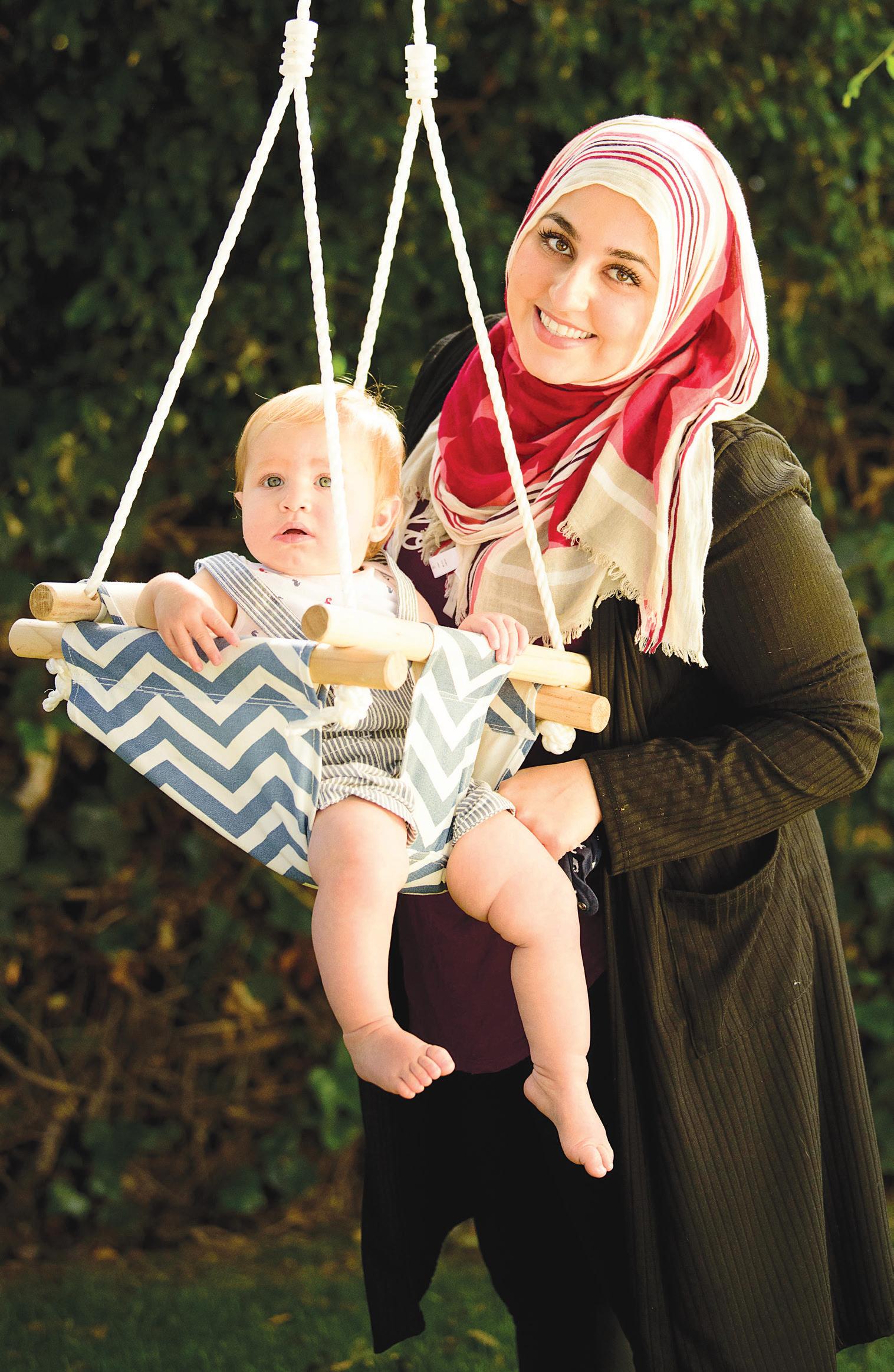 Story by Randi Love
Story by Randi Love
Photos by Randi Love and Magdalena Bleu BRIGGS
Pull up a seat, grab a pen and some paper and listen to this. Yet another meeting where a co-worker is discussing a law case. Now take in the room. The white walls, the floor to ceiling glass windows, the 10-foot table and the multiple chairs that surround you. Make sure you’re taking notes and don’t drift off.
It’s hard to do when you are not as interested as you should be.
Fatemeh Mashouf was doing just that, trying to find interest in the meeting, but she couldn’t. She began writing small notes and other information on her note pad. It was during the holiday season and she thought about all the decorations that appeared in and around the city.
Christmas is such a large celebration in America that the underlying amount of people that don’t celebrate it are overlooked.
Mashouf struggled with her Muslim identity in an unknown Western culture the majority of her youth, which lead to the development of a book series.
She thought about how to help children who may struggle with their identity as she did when she was growing up, and that lead that to “Rafiq and Friends,” an edutainment series that has been featured on National Public Radio.
“The reason I made ‘Rafiq and Friends’ and the way that I made ‘Rafiq and Friends’ is to help little human beings that happen to be Muslim to identify with a culture that currently doesn’t exist very prevalently,” Mashouf said. “They are not Muslims from the Middle East. That’s not their identity.”
She started out on an educational path before turning to law, but the ideal of helping and teaching others to fight through their crises never left her mind.
Mashouf said that the major struggle was not understanding why certain characters idolized by her peers weren’t allowed for her. That while in school many holidays were celebrated but never any of the ones she celebrated at home.
“I just was completely cut off from understanding that. My parents always told me that Santa was fake and that it was ridiculous that I would want him to be real,” Mashouf said. “I just wanted to believe he was real because I wanted to have the level of joy over Christmas that everybody else was able to have.”
With the the way her household was, Muslim holidays came and went almost unnoticed except for visiting the mosque.
The process of publication for her book took almost a year because she wanted it to be a self publication due to the content and context of the book and materials that came along with it.
“The first book of Rafiq and Friends’ series is focused on the celebration of Eid, the last day of Ramadan, which is a major celebration in the Muslim culture,” Mashouf said. “It’s almost the equivalent to a Muslim Christmas, yet growing up here we don’t get the day off school for Eid. We don’t have the malls decorated for Eid. Our teachers aren’t celebrating Eid. So, it was a very isolating holiday, therefore we didn’t get to enjoy the benefit of it.”
Mashouf said that most families that celebrate Eid, do it with their cultural norms, meaning that it’s commemorated in various different ways. She wanted to create a western celebration for the holiday.
Mashouf plans to continue writing more chapters of the book series. The current book
10 | BULL Magazine
Fatemeh Mashouf with her son Sajjad in the back yard of her home on Nov. 5, 2017, in Culver City, Calif. Photo: Magdalena Bleu Briggs
includes activity cards that explain what you should be doing each day of Ramadan, the day before and after, and four activities for Eid Al Fitr. It also includes a plush doll of the main character Rafiq and a date plate to be used on the last day of Ramadan.
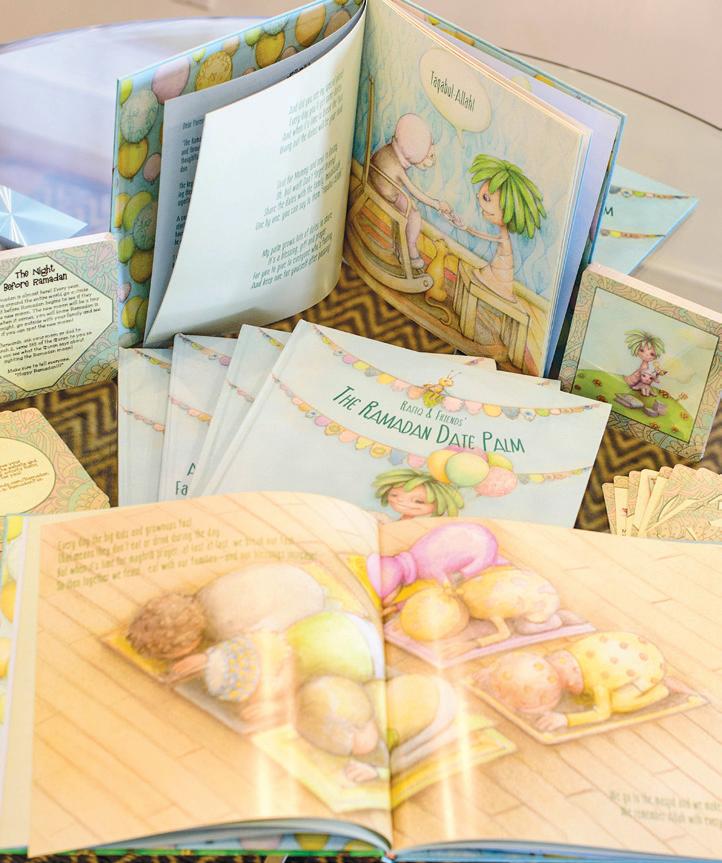
The Imam of the Islamic Center of Southern California, Asim Buyukosy, said that as an immigrant to the states, he could relate to the way Mashouf and her family may have felt when they moved to America.
“I can understand her situation coming from a homeland and finding yourself in a different environment. There are different people. Everything is new to you like the language and the culture and the religion,” Buyukosy said. “Immediately you are looking for something you can relate to, or something that reminds you of home or something you can attach to.”
He said that being a part of a mosque or islamic center can help people to become more comfortable with themselves. Learning more about the culture, religion and society, if far removed from it is beneficial to fitting in and finding a place where everyone can accept you.
Buyukosy said that woman have a harder time than men when it comes to expressing themselves through their religion, because of traditional garments.
Mashouf started wearing her headscarf when she was 9. Her parents told her to take it off a year later and come to the conclusion of wearing it or not own her own. She went 10 years without it and at 19 started wearing it again. Now at 30-years-old she’s had it on everyday of the last 11 years.
“If you are a Muslim lady and you are wearing a hijab to cover yourself, you can easily single out the person or stigmatize and say that this is a Muslim person. Me, I’m a Muslim too, but I can fit in and I can look like any other person,” Buyukosy said. “But especially for those who are wearing the religious attire, it’s really difficult.”
She went through a series of events that led her to where she is today. Five years into her law career she had a son with her husband, and her firm allowed her to do more work from home than in the office both during and after her pregnancy.
“I’m a new mom, and right now what I find great about my job in reality is that my firm gives me the flexibility to be a mom and to be a lawyer and that one does not have to take over the other,” Mashouf said.
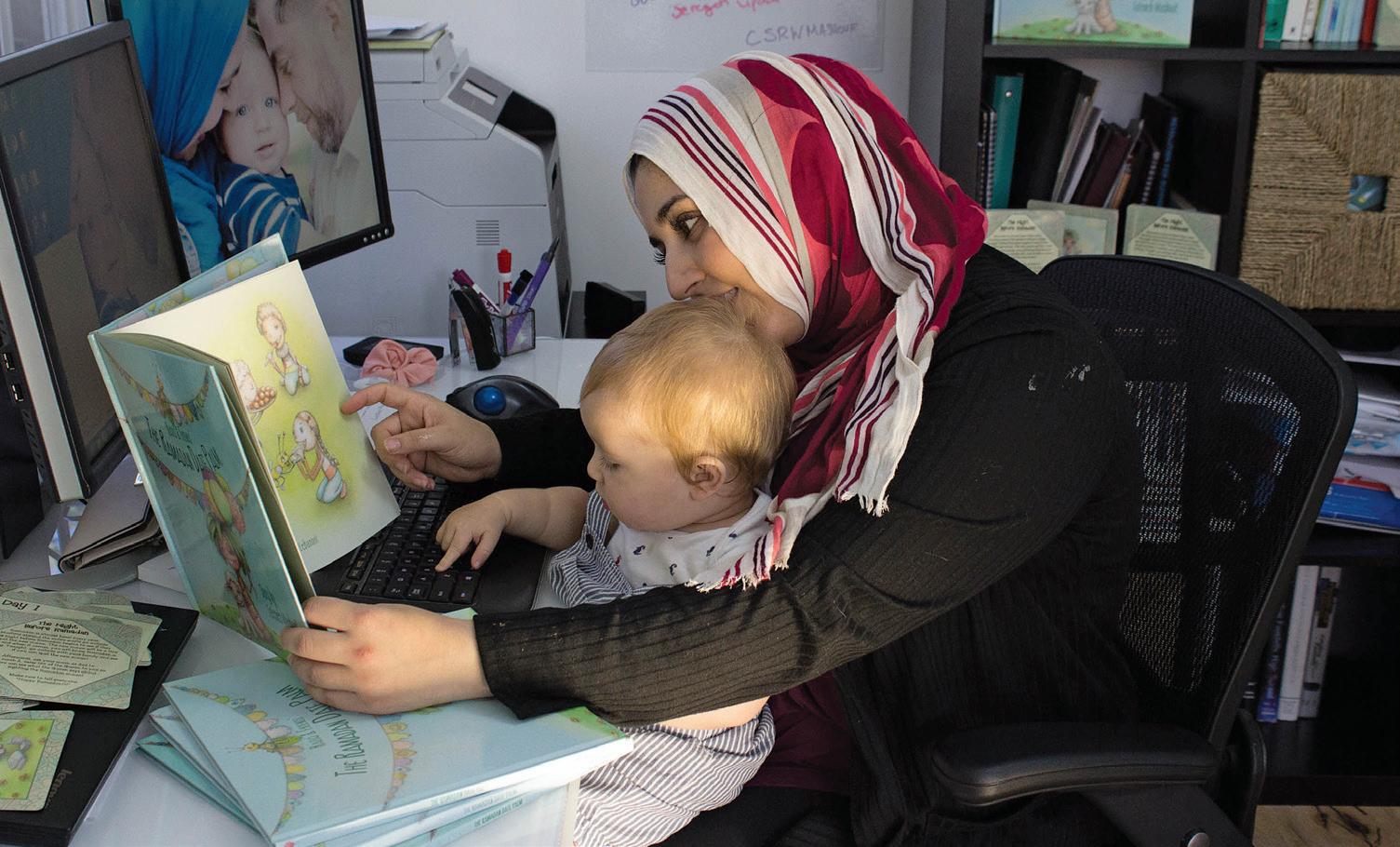
She said that ability to work from home, see her son, meet his need and still achieve what’s necessary for both.
Mashouf said her son and her husband do not look Muslim, so when her family goes out together they face different problems than that of people that all look like a typical Muslim family.
“When we enter certain parts of Los Angeles people will give us a double take. People will think he’s Jewish and I’m Muslim or they think he’s just white and I’m Muslim,” Mashouf said. “It get’s to the point where I can overhear them talking about us in a language they don’t think we understand, but what they don’t realize is my husband does speak Farsi.”
The way the she looked did affect how she dressed for part of her life, but she wasn’t the only one who dealt with finding herself. Her three older siblings and she were never forced to embrace their Muslim culture, but were expected to even though they had the opportunity to find themselves.
“Each one of us had a very different experience in navigating our Muslimness,” Mashouf said. “Some of us understood it to be a part of who we are and some of us rejected it entirely, and a lot of it is because we could not find the balance between who our parents wanted us to be and who we wanted to be just because it was easier.”
Mashouf attended the University of California, San Diego with a major in English and a minor in education, set on becoming a teacher, when her mosque was targeted by the neighbors in the area.
Mashouf said they wanted them out because they didn’t like that there were Muslims in the area and used their permits as an excuse. The permits were said to be for educational use and not religious
use and the courts ruled in favor of the neighbors.
“I felt very frustrated in the process of being in a courtroom and not really understanding and being able to assist the mosque that I cared so much about, so I kind of redirected myself at that point to pursue law,” Mashouf said.
She attend the University of California, Hastings for law school and became bar licensed soon after she graduated in 2012.
“I’ve always felt like I had to be my own strongest advocate and understanding the law meant that I had the opportunity to do that,” Mashouf said. “Without understanding the law and a lot of circumstances I just didn’t have the information I needed to advocate for myself, my community, my family and things that I care about.”
While in law school, Mashouf said she was exposed to many types of law and felt that employment litigation was the best fit for her.
“Employment law had the right balance of personal and not so personal. Because with family law or criminal law I would take the emotions home in a different way and it would weigh me down in a way I wasn’t prepared to allow my work to do for me,” Mashouf said. “So I felt like the emotional burden in those areas was so much, but I didn’t want to be disconnected from people either.”
Shahram Samie, an attorney at Littler Mendelson, met Mashouf while she was still a law student. They had a mutual friend and ended up at the same dinner party.
“Fatemeh is a very driven person and you see that in terms of her going to law school and getting a job at this law firm,” Samie said. “On top of that she has a family and she writes a book and has other endeavours that she handles and does and that’s just really impressive.”
Mashouf’s work ethic and drive isn’t mediocre to those she works with, but that doesn’t stop others around her from treating her in cliche ways.
Mashouf said that she has had to endure many types of racism and xenophobia and she is going to help tear down the expectations and stereotypes of others.
“As a Muslim woman, whether it’s trying to navigate my own culture or whether it’s people outside my own culture trying to navigate me and figure out who I am, it’s constantly a challenge.” Mashouf said.
Women’s Issue | 11
Several copies of “Rafiq and Friends” by Fatemeh Mashouf sit on a table in Mashouf’s home in Culver City, Calif. Photo: Magdalena Bleu Briggs
Fatemeh Mashouf reads “Rafiq and Friends” with her son Sajjad Mashouf at their home in Culver City, Calif. Photo: Randi Love

The Fight is Female
A MISSION TO UPLIFT WOMEN VETERANS
Stationed at a table in the corner of a small bakery, ringlets of reddish curls spilled over a white ruffled blouse tucked under a crisp dark blue business jacket. Eyes glued to an iPhone, a slender finger scrolled through pages of a digital report stopping every few lines, committing the information to memory to preparation for a speaking engagement.
The panicked feeling of an adrenaline rush before stepping onto a podium is meek in comparison to the two tours in Iraq Jodie Grenier served while on active duty in the the U.S. Marine Corps as an intelligence analyst.
As the executive director of the Foundation for Women Warriors (FWW), Greiner’s mission is to empower women veterans who are either on active duty or are transitioning out of the military.
“When you are in the service you serve with so very few women that when you get out of the service, organizations remain male dominated in the same way the service was. It can feel pretty lonely if you are transitioning by yourself,” Grenier said.
Grenier grew up with a single mother and two younger sisters. The opportunity for a college education wasn’t easily attainable so she turned to the military as a way to reach for success.
“I joined the Marine Corps in 2000,” Grenier said. “Once 9/11 happened, that sent a shock throughout the military and the intelligence community.”
Grenier was queued for deployment soon after. During her first few days in Kuwait,Grenier remembers a senior officer asking all the soldiers to write a letter home in case they did not make it back.
“I didn’t necessarily think I was going to die right then,” Grenier said. “That was a very sobering task at 20 years old to write a letter home
with the thought that you might not return.”
Grenier wrote the letter with her family in mind. She wanted them to know that they were capable and could be anything.
“I used to fly, frequently, from Ramadi to Al Asad and then to the Syrian border,” Grenier said. “A lot of times I thought ‘I wish someone could record this and play it to my family.’ Because they never would have a clue that this is my life.”
After her active duty service, Grenier became in charge of the FWW, one of the only organizations in Southern California that specifically strives to help women veterans with the issues they face.
“We serve women veterans in their four biggest needs: housing, childcare, employment and education,” Grenier said.
One of the biggest struggles that women in the military encounter is having childcare while they are at school furthering their education after their service, according to Grenier
“A lot of times, child care is significantly reduced while you are in service,” Grenier said. “But when you get out of the service the price increases drastically and that becomes a burden.”
The FWW also provides financial assistance to veterans who are actively working to better their lives by working on their career or pursuing a higher education.
“Anyone in the country can call and we can connect them with the resource they need. Whether or not it is healthcare or childcare. We work with over 800 partners to do that,” Grenier said.
Juliana Mercer, a friend and colleague of Grenier’s, often collaborates with FWW on similar issues.
“Males also need housing assistance and assistance with child care,” Mercer said. “But, women’s needs are just a little bit different. Being able to focus on those needs specifically is really important because we are unique.”
According to the U.S. Department of Veterans Affairs, the unemployment rate of female veterans is 5.4 percent, compared to the to 4.5 percent for male veteran unemployment.
 Story and photos by Taylor Arthur
Story and photos by Taylor Arthur
I didn’t necessarily think I was going to die right then. That was a very sobering task at 20 years old to write a letter home with the thought that you might not return
- Jodie Grenier
“[For example,] single parents. The moms end up with the kids and she can’t go to school because she is focusing on childcare. There is also, just in the general population, the glass ceiling,” Mercer said.
There is also the issue of equal pay for women in the workforce after one’s service in the military has ended.
Currently, women’s median earnings are $10,800 less than men’s median earnings, according to a report by the Senate Joint Economic Committee Democratic Staff last April.
“That is another issue for all women, but that is an issue that affects and impacts female veterans more than it does with the general population because of their experience translating from military to civilian,” Mercer said.
When Grenier was transitioning out of the Marine Corps, she sometimes felt left out of the conversation because the majority of veterans are male.
“No one knew that I was a veteran unless I said it,” Grenier said. “ I think the struggle, more or less, was not so much me not being recognized. It was me figuring out the lack of opportunity. My mentors on the outside were non-existent.”
Women were not allowed to serve in the military as anything but nurses until World War II. However, even then, they were only granted permission to serve in noncombat roles, according to the Williamsburg Foundation.
It wasn’t until 1991 that women were granted full operation rights in combat zones.
“I think women have served in the military and have been grateful for the opportunity to serve and that has stifled our progress in terms of capturing our history and really celebrating our accomplishments,” Grenier said.
U.S. Navy Supply Corps Lieutenant Commander Pamela Keller retired this year after serving in the Navy for 40 years.
When she enlisted in 1976, a woman’s role in the military was to free men to fight in the war by taking non-combat positions, according to Keller. However, in 1978, women had an obligation to fight.
“The changes that have happened from that period of time to today are phenomenal,” Keller said. “The last hold out are the SEAL teams.”
Women were barred from applying to serve in the Special Warfare Combatant-Craft Crewman Program and the Navy SEAL teams until January of 2016. After applications were open to females for 18 months, two women submitted their paperwork for eligibility.
However, their names were not released to the public for fear that their personal security and future career viability would be put into jeopardy, according to a 2017 article by CNN.
So far, all graduating SEAL teams have been men.
“There was a time, and it still exists today, when all women have to try just a little bit harder to excel and make sure that they are a contributor. There are still people in the services who would rather not have women in every facet of the service,” Keller said.
Because so few women serve in each division of the military, standing out against one’s fellow soldiers is unavoidable, according to Keller.
“One of the most difficult things was the
ridicule and questioning you get when you are the only women in a 385 person squadron, it’s extensive,” Keller said. “You have to shine your shoes better, shoot better, run better. You are already at a minus five when you step in and that has been changing a great deal.”
Keller believes that people shouldn’t look at the problems with the military and think that the root of those problems stem from the military.
“The service is a reflection of our society. We still have sexual harassment. Women are working through that. They are keeping their eye on the ball and holding their heads up,” Keller said.
There is a large disconnect between women’s history and society, especially in the military, according to Grenier.
“There was no, ‘Oh, I want to be like her when I grow up. So, I am going to be a Marine,” Grenier said. “When we think about women who have blazed the trail, you never hear about a woman like Admiral [Grace] Hopper. You never hear them as being role models.”
Josie Grenier, Jodie’s sister, joined the United States Air Force after deciding that community college was not for her. She served six years and traveled between air bases in Las Vegas, Iraq, Korea and Tokyo, where she currently lives.
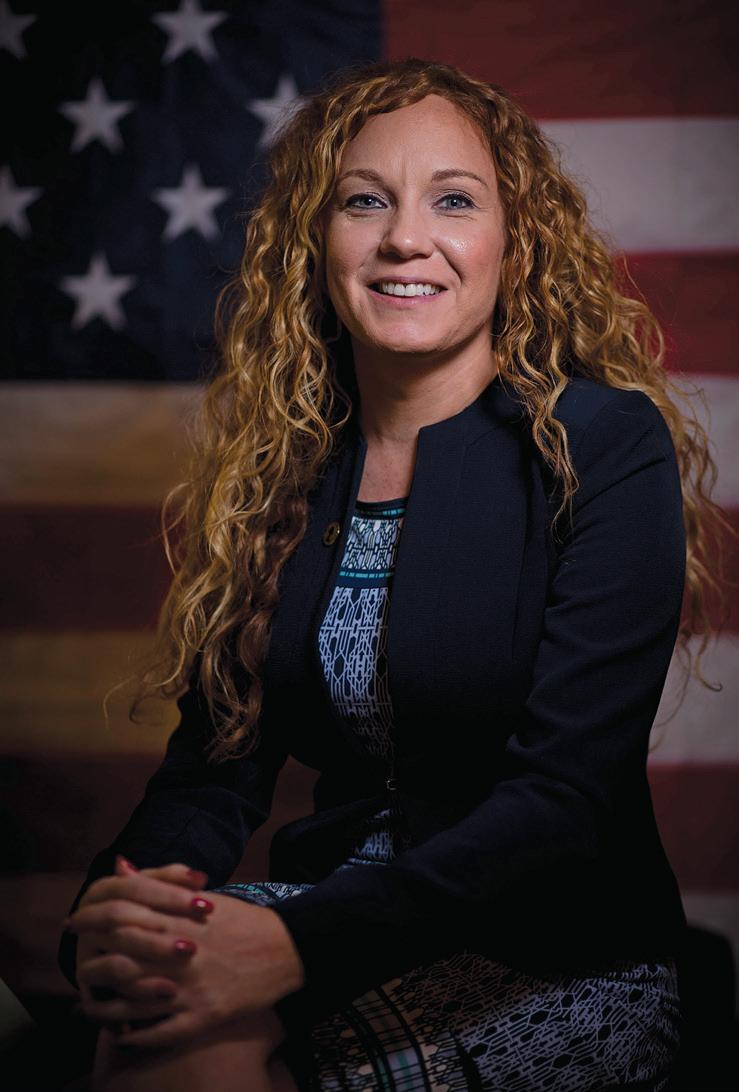
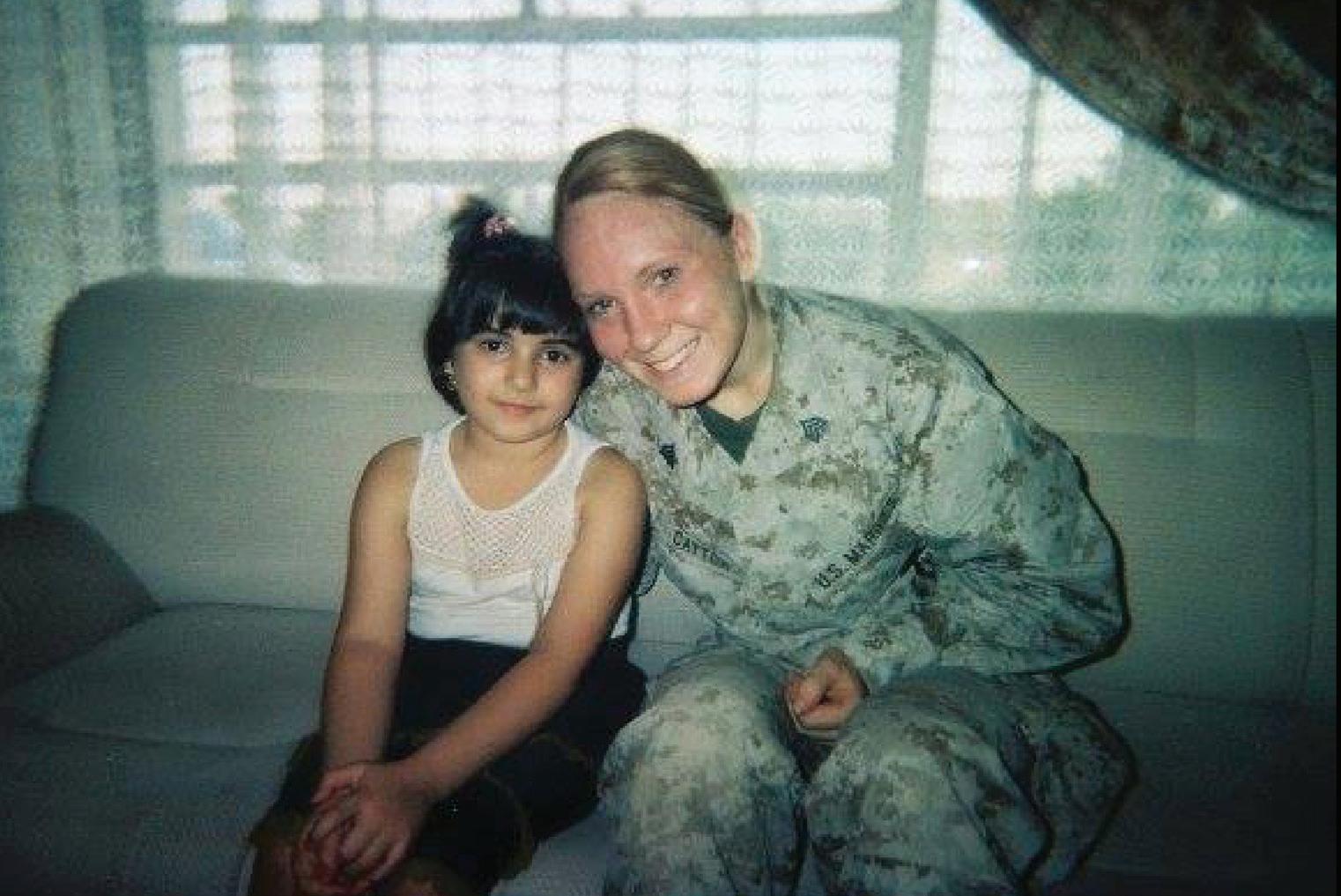
“Jodie had played a major influence [in my joining the military] because she was doing great,” Josie Grenier. “It’s one thing to be successful in your own life, but then to ensure that the other people around you will be just as successful is beyond words. It’s something that I never thought I would see coming from her or anyone in our family.”
People must start looking at the military as a reflection of society. The sooner society begins to do away with certain stigmas about females in the military, the sooner things will begin to change, Jodie Grenier said.
“I think that women who have served or challenged the status quo should really brag about themselves and that will be a source of inspiration for younger women to serve in our
military,” Jodie Grenier said. “The more women we have in the military beside our brothers, the more cohesive and less unfamiliar that territory will be.”
14 | BULL Magazine
Executive Director of the Foundation for Women Warriors Jodie Greiner attends a conference for women veterans at the Pacific Palms Resort on Oct. 14, 2017, in the City of Industry, Calif.
A child sits with Jodie Grenier in Ramadi, Iraq 2004. Photo Courtesy of Jodie Grenier.
away
Story AND PHOTOS BY JOSE HERRERA

“The system has to help them, but the system will never be able to do what a family can do.”
- Socorro Reynoso
irls sit scattered across a beige-room and laughter erupts from their mellow expressions as “mom” strolls in the living room with black heels and a matching midnight dress to follow. Violet lips part and form a welcoming smile embracing the young ladies in an endearing manner.
Socorro Reynoso, a social worker, is the Administrator of For the Future, a group home in Simi Valley, California and the Director of Mental Health of the Emergency Shelter Program and Delilu Achievement Home located in the southcentral area of Los Angeles.
Throughout the cumulative six years that she obtained her positions within the DeliannLucille Corporation Agency’s organizations she aided girls between the ages of 12-17 involved in the child welfare system or probation overcome obstacles and trauma.
“I understand what it’s like to be away from the people you actually want to be with,” Reynoso said. “I thought what better place to make a difference than their home. To run their home and make their home feel great. And make them feel like they can ask for anything, nothing is outlandish.”
Her roles and duties depend on the location she works at however, throughout the week Reynoso spends more time in her primary role as the Administrator of For the Future.
Although each position carries different responsibilities, there is overlap such as maintaining the clinical needs of the residents, making sure the emotional needs of her staff and co-workers are intact, managing appointments, keeping up to date with paperwork, and above all else interacting with the girls day to day, she said.
“I have this beautiful Jay lounge chair and I try to let all my girls know that I am available, so they can talk to me about anything,” Reynoso said. “I love when they come here and talk. I tell them, ‘you don’t have to talk to me if you don’t
want to. We can sit here and just be.’”
According to Reynoso, those are the formal times that they talk but then there are the informal where the girls come in, hang out and really let their walls down. It’s not just with her but with staff as well.
In each facility there are about five to eight girls for an unknown amount of time but the Emergency Shelter Program is meant for crises, houses a higher amount of clients and is for 30 days while the girls are sent off to other facilities.
A typical day for Reynoso begins at 7 a.m. and ends at 7 p.m. and includes receiving 10 phone calls from her staff asking for advice or the county calling about a kid and wondering if they’d be a good fit for For the Future. She sees about 100 texts a day and about the same amount of emails.
She has two phones; one for work and one for her personal life. Her work phone, an iPhone 6S, is protected by an otter case because without that phone she said she would be SOL.
“This job is emotionally more stressful
because I am basically like a professional mom,” Reynoso said. “I can never not have this phone with me. Ever. Even when I leave the country I have to have this phone with me because I am ultimately accountable and responsible for anything that happens.”
Although, Reynoso describes her role similar to that of a mother she understands she isn’t the girls’ parent but uses the term as a way to explain to others about her work with young girls. Throughout the two years of her duties as Administrator of For the Future she has helped about 50 girls.

For the most part she said that there are three cases for clients that come through the facilities. They either succeed with their goals and leave, they leave and come back the same but hope to change, or the worst case is that they leave.
“That is difficult to deal with knowing that there hasn’t been any change made,” Reynoso said. “It makes you wonder what you could have done differently.”
There are certain clients that run away or girls that leave but ask to come back because
16 | BULL Magazine
A Social worker describes the heartache and achievements of administering a group home for girls across la county
GSocorro Renoso and Elizabeth Ruiz sit on the stairs of the Delilu Achievement Home in Los Angeles, Calif. on Friday Oct. 13, 2017.
I once wasn’t (there for my son) and I realized a little too late, but it’s never too late
- Brenda Elizabeth Lopez Ruiz
they realized that the best place for them to be at was the For the Future.
“It feels good like we’ve done something right here, creating something that is attractive to them,” Reynoso said.
The facilities are funded by the counties and provide approximately $500 to $5,000 depending on the needs of the clients. There are 20 staff members that work at For the Future with three shifts throughout the day. There are rules in place to teach the girls responsibility and for safety according to Reynoso.
They also provide various group sessions such as nutrition, goal-setting group, independent living, mindfulness, meditation, and art therapy in the group in Simi Valley while at the Delilu Achievement Home they provide other programs and family therapies.
According to Reynoso, the family therapies are unique because every family is different. They work on strengthening relationships and individual behaviors, and for those clients who don’t have a family to go back to, aid them in their transition into becoming independent adults.
“My big push for my staff is to remember that this is a place for rehabilitation and we have to be rehabilitative,” Reynoso said. “That means we can’t mimic any of what they’ve already seen in their previous living situation. When they say or do mean things we have to respond in love. We have to respond therapeutically.”
The clients that walk through the facility doors come from similar situations. A group of communities that haven’t been properly served or who have been in the past disenfranchised to where now the structure of the family within that culture demographic is often broken said Reynoso.
According to Reynoso, girls come in with their self esteem and self worth very low, with broken families, individual members lacking in coping skills and no awareness of mental health.
“It becomes stressful when you have a resident that you can’t help in your facility,” Reynoso said. “Sometimes they’ll come in with needs that exceed what we can do. It gets out of control when you can’t control it. For the most part, these girls want to go home. They work hard so they can go home.”
The services and programs that the group homes provide build the groundwork clients

need to form healthy habits and coping skills that they will use to overcome obstacles and achieve their goals.
“The system has to help them but the system will never be able to do what a family can do,” Reynoso said. “We are getting closer but we are nowhere near where we should be.”
Eighteen year old Brenda Elizabeth Lopez Ruiz is a resident of the Delilu Achievement Home since the beginning of September. Within the first month of her admittance she said that she is doing well and feels comfortable in the facility because of the girls and staff there.
Ruiz came from a different facility in the Los Angeles county where they housed 46 girls but because of the structure of it she awoled. She had a warrant out for her arrest but turned herself in which gave her the opportunity at an attempt at a group home.
“It was hard when I first started but along the way I learned that it’s actually not there
him because he is still small. Right now, he doesn’t know what is going on and it’s better to do that now than later.”
Ruiz participates in weekly groups such as Narcotics Anonymous and parenting classes. She is attending adult school to complete her General Equivalency Diploma and working toward a job to provide financial support for her mother and child.
“I want to learn how to be a better parent and a good mother to my son because he is my priority and my life,” Ruiz said.
Reynoso said that the staff and herself do their best to make the group homes feel like a second home for their clients. Eventually, she said that the girls become a support system for each other as well.
Ruiz shares a bedroom with another girl and she said that they are close. They share almost everything with another.
“She supports me in everything I do,” Ruiz said. “She reminds me that everything I’m doing is for my son. She motivates me and I’m just glad that she’s here.”
trying to make me suffer but to help me,” Ruiz said. “I’m glad I am on probation because if it wasn’t for probation I wouldn’t have as much benefits as I have now.”
In 2008 Ruiz left her home in Guatemala with her sister and father and tried crossing the border at Texas. They were caught and her father was almost shot in his head because he tried to get them across to the United States, she said.
The three of them were sent to a family jail and then had a court appearance where they decided to deport her father but not them. She hasn’t seen her dad in 10 years and moved in with her mother until she decided to leave at 13.
While she was homeless she eventually started doing drugs and at 16 got pregnant. Now, with the help of Socorro and the programs provided by the group home she is motivated to do better for herself and her two year old son.
“I once wasn’t (there for my son) and I realized a little too late but it’s never too late,” Ruiz said. “ I’m trying to make it up to
Clinical intern Yvonne Gordon, who interviewed with Reynoso for the position, said the work they do is crucial for these girls whose history revolves trauma and different issues. “When they leave here, if they don’t learn how to develop a healthy mindset their whole lives can be stagnant,” Gordon said.
According to Gordon, there was a particular resident who didn’t want to do individual therapy sessions with anybody.
“ I respect that because you don’t know these people,” Gordon said. “Why should you have to give up your heart so anytime anyone (of the girls) wants to open up their heart to me is always a gift to me.”
But eventually, the client began to met with Gordon. At first it would be for five minutes which then became 20 minutes. She said that the change shows that there’s an approachability to her and that the clients feels comfortable speaking with her.
“Just to know that I can provide that for somebody, and I’ve seen that during group therapy or individual therapy sessions, there is a comfortability that the girls have with me that I don’t take lightly,” Gordon said. “I’ve been able to see different girls blossom in different ways.”
Women’s Issue | 17
Illustration by Jose Herrera
Firing up the Future
Pierce College’s only female welding instructor ignites young minds
White sparks sailed as embers landed on the weathered work boots of young shielded students. The sun started to fade as welding instructor Darlene Thompson worked her way down the rows as she observed her students from a distance with calculated and warm eyes.

Originally from Chicago, Thompson and her family moved to California in 1984 where she attended Mount Vernon Junior High, Dorsey High School and graduated from Crenshaw High. Thompson would continue her education half-heartedly for a couple of years.
It’s a sharp contrast to Thompson’s life 10 years ago, when she took on the role as a student after returning to college. With a little encouragement and a great deal of faith she earned her bachelor’s degree in about a year at California State University, Los Angeles and United Association Local Union 250.
Certified by the American Welding Society (AWS), Thompson demonstrates her knowledge by teaching her students a variety of skills in Oxygen Acetylene Welding (OAW), Shielded Metal Arc Welding (SMAW), Tungsten Inert Gas (TIG) Welding and Flux Cored Arc Welding (FCAW).
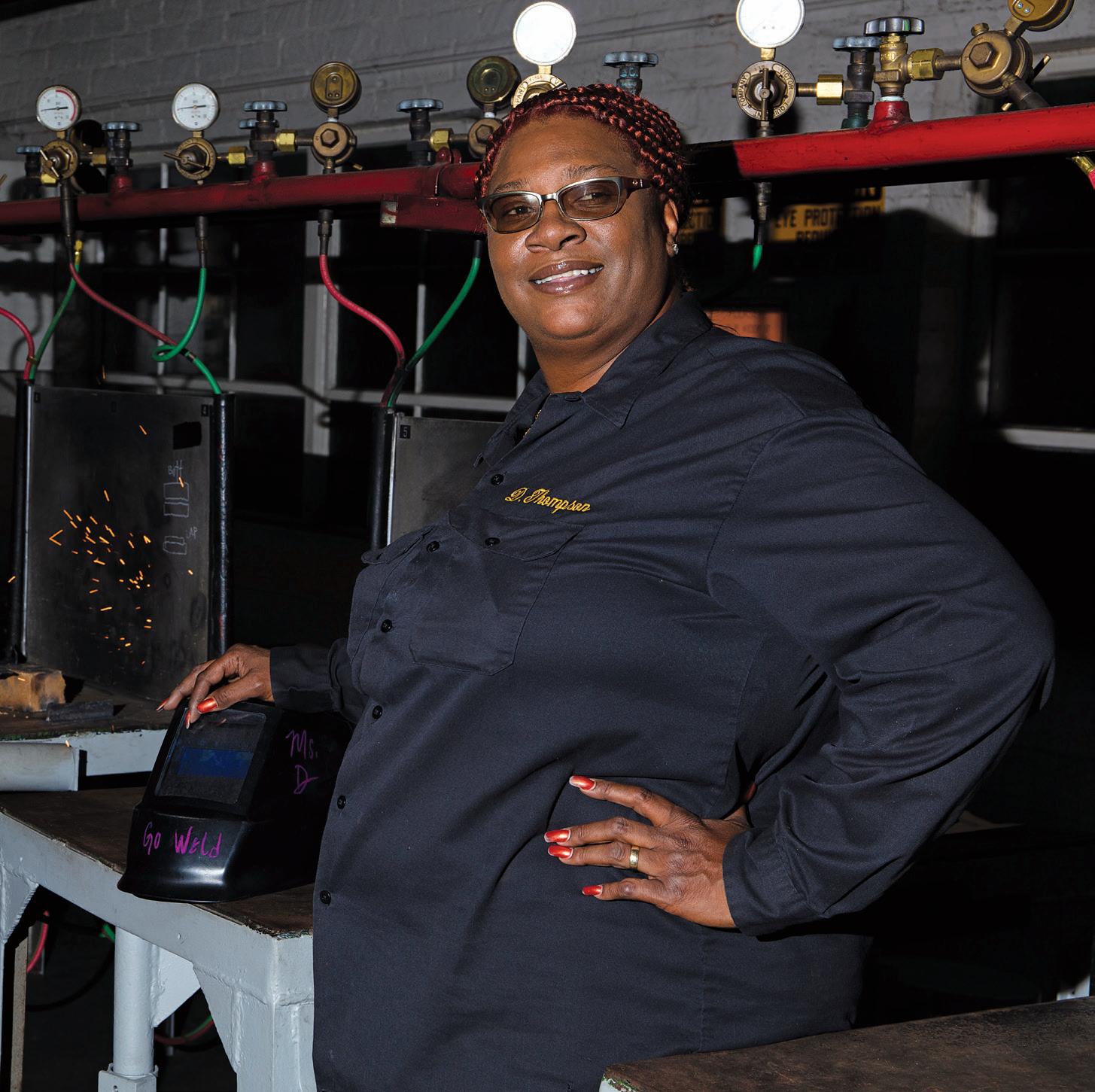
Thompson admitted the journey was never smooth, as it originated from childhood health problems.
“As a child growing up I was never told I was smart,” Thompson said. “People would call me dumb or stupid. I had childhood epilepsy syndrome. I never applied myself after that.”
Gender stereotypes plagued her as the daughter of a preacher where she played down her love of automotive to not bring shame to her family for not being girly enough.
“Growing up as a preacher’s child was tough. Girls shouldn’t work on cars. That’s something boys do,” Thompson said. “So for
18 | BULL Magazine
Story by Jennifer Belcher
Photos by Mohammad Djauhari
Welding instructor Darlene Thompson stands in front of oxy welders in Applied Technolgy 3805 at Pierce College on Wednesday, Nov. 1, 2017, in Woodland Hills, Calif.
years I distanced myself away from cars, but I still loved going to races, car shows and hanging in friends’ car shops, just watching them put cars together.”
Elizabeth Cheung, an assistant professor of engineering and computeraided design, recalled her initial impression of Thompson, her first hire since becoming the Industrial Technology Department chair in July.
“She was such a warm and energetic person,” Cheung said. “I’m glad I was part of the hiring process.”
Thompson credits her Los Angeles Trade Technical College welding professor Lisa Legohn for kickstarting her return to education.
“It was a paper I had done for her class,” recalled Thompson with a smile. “When she told me I was smart I believed her. At that point I started to go home to study and read. I found myself getting all A’s.”
Lisa Legohn, an associate professor of welding at Los Angeles Trade Technical College, has been teaching for more than 23 years. Legohn remembers Thompson always being well organized, knowledgeable and a friendly student.
“Darlene was a paid student worker for the Welding Department here at Trade Tech,” Legohn said. “She received an Associate of Science Degree and a certificate of completion in both gas and electric welding and auto collision repair and painting.”
Thompson discussed frequently with Legohn about her passion to teach others and that returning to school had brought back her love for learning. While she loved auto collision repair and painting Thompson decided to explore the world of welding.
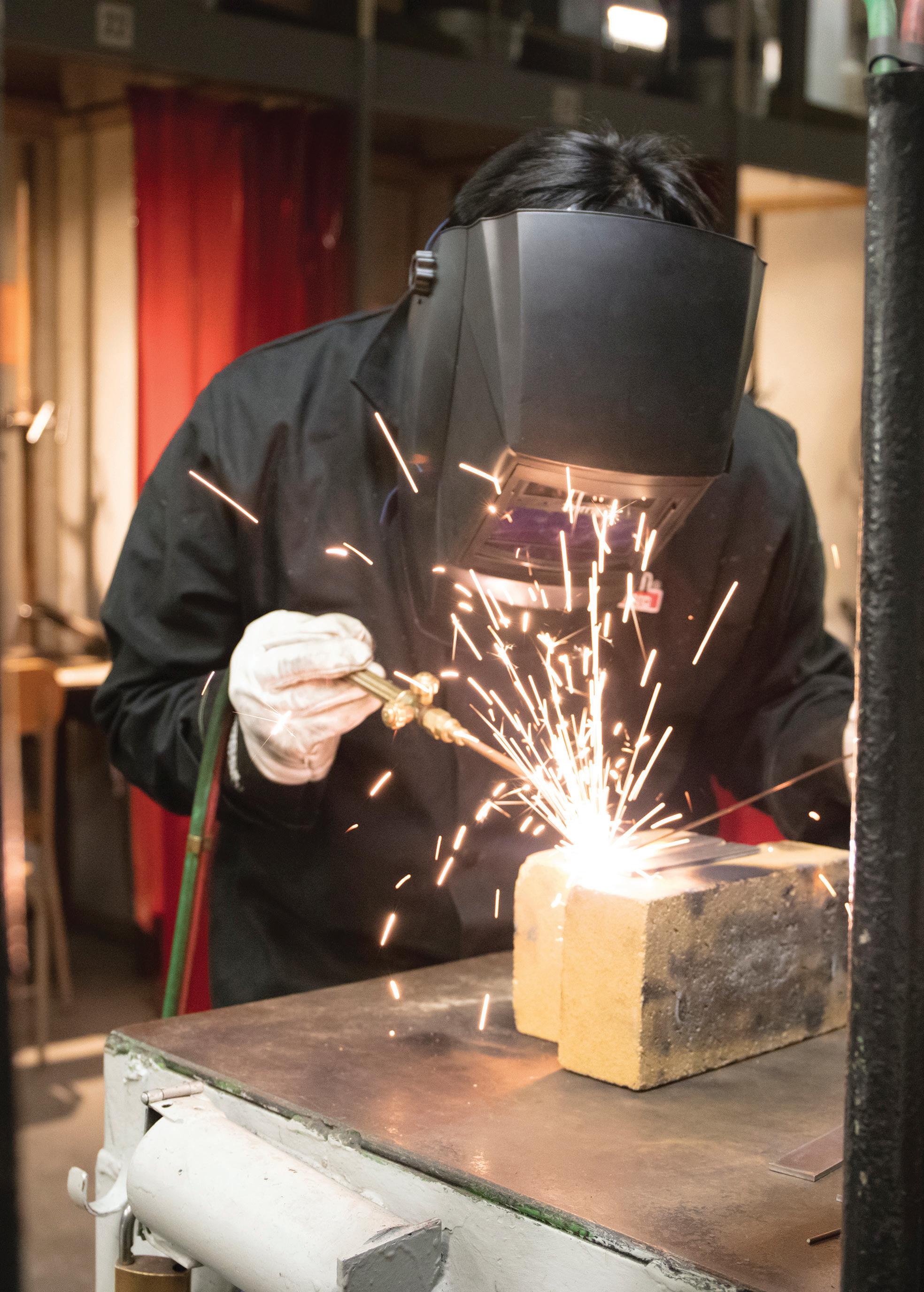
She sheepishly admits her turn to welding was due to miscommunication.
“I accidentally cut a car in half,” Thompson said.
While taking a class on auto collision and repair, she was working on a car and placed it on the chief — where they straighten the cars out — when she went to inform her instructor that she was finished.
Women’s Issue | 19
Isaiah Samano welds on a brick platform in Darlene Thompson’s welding class at Pierce College on Nov. 1, 2017.
“He was making this slashing hand gesture,” Thompson said. “He was really busy on the phone and computer. So I’m thinking he wants me to cut the car. So I go back and cut the car in half. What he was actually telling me was to cut the cost in half for the customer. I didn’t know, because I never spoke with the customers before.”
Thompson said her boss gave her two weeks to learn how to weld and fix the car.
“While I was learning how to weld, my instructor told me I was pretty good at it,” Thompson said. “She said I should take Structural Welding to work on buildings. She had told me so many fascinating stories about hanging off the edges of buildings, so I went back to take a few classes.”
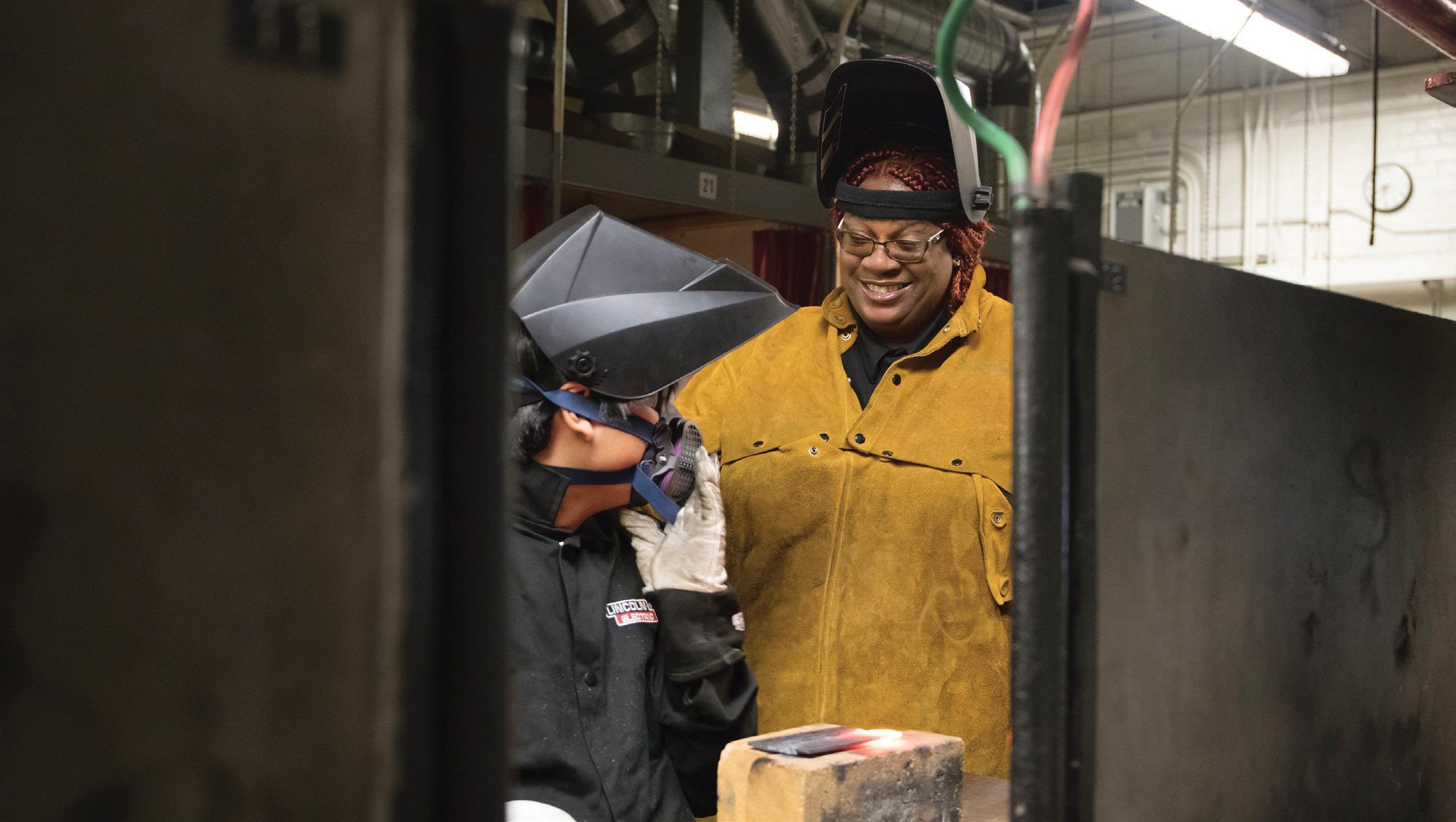
Thompson had been told that if she majored in automotive technology, the county would help pay for her books. This wasn’t the case went she arrived at their office.
“They told me ‘no, we don’t pay for women pursuing nontraditional occupations. If you want us to pay for your schooling you can sign up for real-estate, cosmetology, culinary and fashion,’” Thompson said. “I told them that’s not what I wanted to do. They said those were the only careers they would help me pay for.”
She felt discouraged, but the county set her up for another appointment, accidentally sending Thompson to their Beverly Hills office.
While waiting in the lobby, feeling hopeless, a lady approached Thompson and she told her she hoped the county could help her. Thompson said she began to show the woman her portfolio as they both stepped into the elevator.
“I’m flipping through pictures of what I do. She was really interested in it,” Thompson said.
Thompson explained to the woman that she
was hoping the county would be able to help pay for her classes.
“While I was talking to my worker the same woman from the elevator came over to us,” Thompson said. “I was thinking to myself I had just said goodbye to her what does she want. She tells my worker to ‘Give Mrs. Thompson whatever she wants.’ I had no idea I was talking to the head supervisor in that elevator.”
While the county believed at the time that
in a room of over 60 men.”
Thompson admits that welding and industrial technology are not typically female heavy classes or majors.
Cheung recalled being the only female teacher at Pierce in her department when she was first hired in 2010, saying the mixture of teachers in the department currently is great as each individual brings a different perspective and knowledge to the field.
“I only have one female student in my class at Pierce, and when I was at Trade Tech I had maybe three in a class of 40,” Thompson said. With each birthday, Thompson believes she has grown more accustomed to teaching her students rather when her original hands on approach by doing it herself. She helps and teaches her daughter and her friends about cars and how to fix them.
“I teach because I want to give back to students what was given back to me,” Thompson said. “My teachers prayed for me and pushed me to do better, to try harder. ”
Thompson believes that there are some students that just don’t believe in themselves. Students who were told somewhere along the way that they just weren’t worth the effort to help.
women would just drop out of typically male dominated classes, Thompson knew it wasn’t fair to the women who enjoy plumbing and automotive. She remembers the small number of female classmates she had at Trade Tech and CSULA.
“When I first started college I had about five female classmates. Then they started to dwindle down,” Thompson said. “By the time I had graduated it was just another girl and me
“I want to let my students know that’s not true and that they are worthy. By teaching all of them I’m getting through to one of them,” Thompson said. “Someone in the crowd needs you. I enjoy teaching because I want to uplift them and let them know they’re in a safe place. I’m right there with them.”
“It’s something I tell my students, even when you’re down, keep getting up,” Thompson said. “There are people in higher places that see you. Someday someone will come and give you a hand.”
20 | BULL Magazine
They told me no, we don’t pay for women pursuing nontraditional occupations.
- Darlene Thompson
During a brief break, Isaiah Samano speaks with Darlene Thompson about the quality of his weld and how he could go about improving his next weld on Nov. 1, 2017.
Woman with the News
How one woman’s passion is helping other women
In a tiny office cramped and filled with magazines, Assal Pahlevan sits at her desk writing, designing, making calls to possible advertisers and working alongside her fifteen reporters and writers including her father.
Pahlevan advocates for women and human rights, both nationally and abroad. She is the owner of “Ferdosi Emrooz,” a magazine published in Encino, California that circulates around the globe that focuses on political and social issues.
Her passion for storytelling led her to host a talk show on satellite Persian TV where she further discusses those issues. Her father, Abaass Pahlevan, was the Editor-in-Chief of the magazine “Ferdosi” in Iran. Because of the Iranian revolution in 1979, they left Iran and
emigrated to Paris, France. When they moved to France, that’s when her work as a human and women’s activist began.
Assal said that she wanted to help women in Maghreb, Africa, because the women there were being abused physically by their fathers or husbands. She spent a few years volunteering, but left France because her father was in danger from the Iranian government.
Eventually, they arrived to the United States. Assal was able to attend L’Université ParisDauphine in France for accounting and electrical engineering, but her connection to storytelling motivated her to start the magazine, “Ferdosi Emrooz,” which she still runs today. Her father and husband Sidb Mohasseb, a professor and board member at the University of Southern California, are a huge support Assal said.
Above Right: The control room where audio and video is monitored for Assal

Right: Assal Pahlevan is shown on a monitor as she begins her talk show.

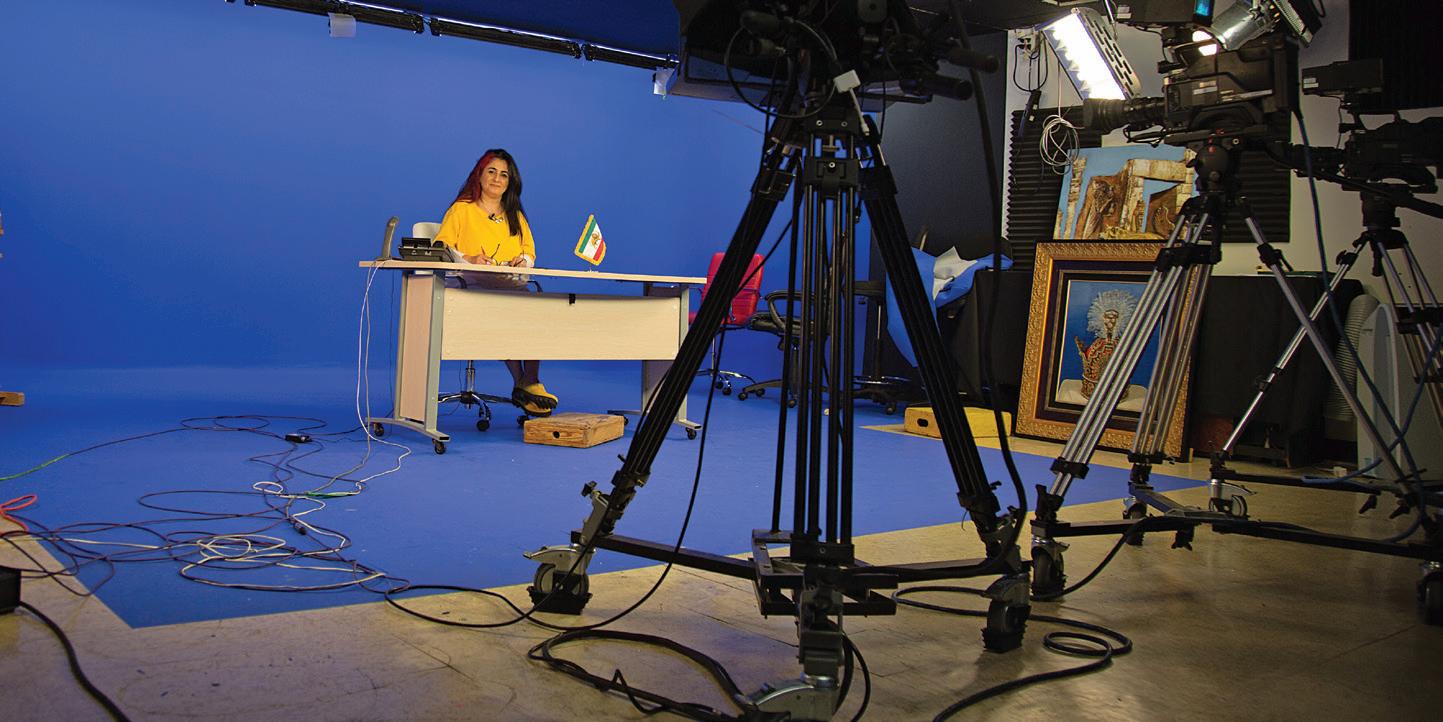
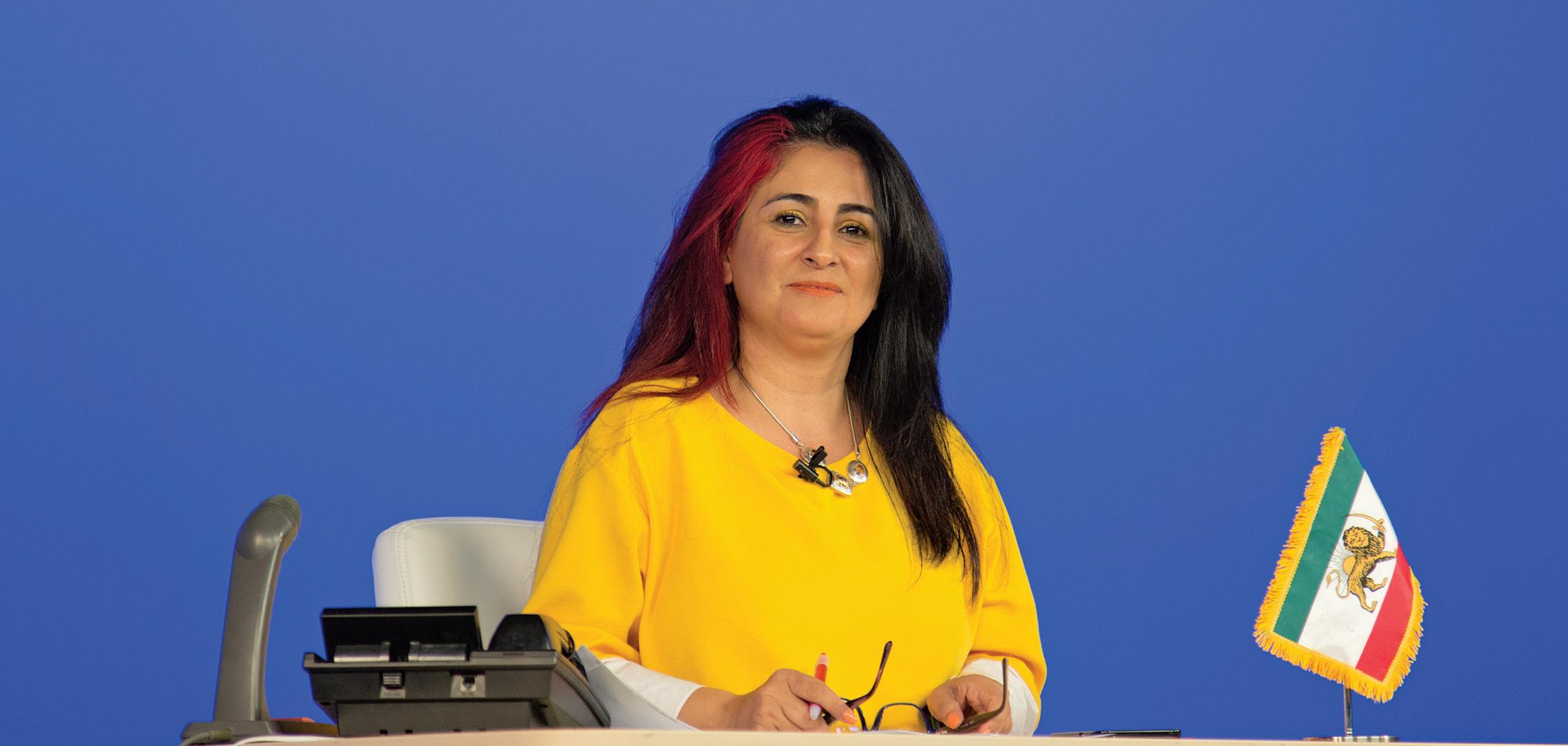
Women’s Issue | 21
Above: Assal Pahlevan connects to a Persian satellite in preparation for her talk show that focuses on human and women’s rights on Wednesday, Sept. 13, 2017 in Encino, Calif.
Pahlevan’s talk show.
Left: Assal Pahlevan sits in the studio where she hosts her talk show in Encino, Calif.
Story and photos by Reza Rastegarrazi
A Mecca in Lincoln
organization helps shape the lives of teen girls
Story and photos by Mohammad Djauhari
Arow of oatmeal canisters are placed on a table as a group of young girls talk among themselves, laughingly describing how their weeks went. When one of them asked what the oatmeal was for, they were surprised to hear the canisters will become their cameras for the semester, which would be odd for many teens growing up in the digital age. But behind the follow-up questions, you can sense the desire in these young girls to learn more.
Las Fotos Project, a non-profit organization located in Lincoln Heights, helps young girls develop their creativity and talent with one-on-one mentoring in photography and multimedia, while encouraging self-confidence and collaboration through the cultivation of a sisterhood.

“We have had girls who have chosen photography as a career because of what they’ve experienced at Las Fotos,” Laura Gonzalez, program manager at Las Fotos said. “This is definitely something that is making them think about photography as a professional career and we have girls who are really talented and amazing photographers.”
Founded in 2010 by Eric B. Ibarra, the
organization materialized because he believed the need for more programs that would focus on teaching a skill would help young Latinas in Los Angeles with self-confidence, while forging a path toward a career.
“I did my first Las Fotos Project in the summer of 2010,” Ibarra said. “I partnered with another non-profit organization called Para Los Niños, and I facilitated a summer photography camp for teen girls.”
While doing research on organizations with photography programs, Ibarra was inspired to create Las Fotos after coming across the documentary film “Born into Brothels: Calcutta’s Red Light Kids,” in which documentary photographer Zana Briski offered to teach the children of prostitutes photography after befriending them.
“I wanted to create my own version of that in L.A. where I was living, and that’s how everything came about,” Ibarra said.
In its humble beginnings, Las Fotos didn’t own a permanent place, so Ibarra and other early volunteers had to hold their meetings and classes at schools or other temporary locations.
“We would go to different schools and organizations in Boyle Heights and they would
let us borrow their space,” Gonzalez said. “Because we didn’t have our own space, we could only organize a limited amount of events and workshops.”
The organization was able to buy a space last year, which allowed room for new programs, a gallery to showcase the work of its students, and a place where everyone can meet.
“When we got the space in Lincoln Heights, we wanted the space to be a place where the girls can come and hang out. We want them to really take ownership of the space,” Gonzalez said. “We built a darkroom this semester, and we’re going to have film classes, which is very exciting.”
With a new gallery space and the addition of a darkroom, the organization can now hold more classes and introduce their students to new aspects of photography, such as pinhole photography on cameras made from oatmeal canisters.
Managing a nonprofit can be a challenge for any new organization because there are basic bills such as utilities, rent and teachers to be paid. Though there is money out there in the form of philanthropic donors and organizations, taking the time to fill out applications and proposals takes a lot of effort.
Lincoln Heights
girls through sisterhood and photography
 From left to right: Alexis Casa, Natalia Angeles, Jacqueline Arellano, Dolores Loaezd, Kirsten Tapalla and Mary Reyes, students of the Digital Promotores class, stand in front of photos from a previous exhibit at Las Fotos Project gallery in Lincoln Heights, Calif. on Saturday, Oct. 28, 2017.
From left to right: Alexis Casa, Natalia Angeles, Jacqueline Arellano, Dolores Loaezd, Kirsten Tapalla and Mary Reyes, students of the Digital Promotores class, stand in front of photos from a previous exhibit at Las Fotos Project gallery in Lincoln Heights, Calif. on Saturday, Oct. 28, 2017.
“Early on from a personal perspective, I wasn’t very involved in nonprofits and understanding management, development and fundraising. That’s all stuff that I had to learn through trial and error,” Ibarra said. “I didn’t come from the nonprofit world, so having to identify foundations and eventually building a base of individuals who want to support our work, was probably the biggest learning curve.”
Eventually, Ibarra was able to partner with other nonprofits and learn from them. In 2011, Ibarra applied for fiscal sponsorship to Community Partners, where they focused on growth, and that allowed Ibarra to worry less about administrative issues.
Though Las Fotos’ students are all teen girls, that wasn’t always the case. Early on, boys were introduced to the program, but eventually a shift happened, which proved to be beneficial to the dynamics of what the project it is today.
“Boys were introduced to the program, and we shared a space with them. When the boys were around, the vulnerability in the stories the girls shared, they felt uncomfortable, and it shifted a bit,” Ibarra said. “So, from that point, it kind of just naturally turned into a project that focused on young women, and, over time, I learned that there was a need for these types of programs for girls in L.A. because there weren’t many examples.”
That change in dynamics, along with the emphasis of women mentoring teen girls, helped the girls of Las Fotos naturally transition and mature during that difficult time of growing pains many teens experience.
“Before I came, I was very very shy, but the mentors have really helped me,” said 16-year-old Nathali Diaz, a student of Las Fotos. “When I meet friends here, they’ve all had different experiences, and they’re able to share that with me. If I meet someone who’s completely the opposite of me, who’s very outgoing and passionate, it’ll rub off on me.”
Toward the end of 2016, the political spectrum in this country saw a shift that can be best described as polarizing. Issues such as immigrant, gender and women’s rights created a dialog that many
Americans are now having.
“It’s important that our voices be heard to remind people that you need to be yourself because this world will quickly change you,” said Alyssa Garcia, teaching artist for the Digital Promotores program of Las Fotos. “It’s huge for our future and the future of their communities, their self esteem and self acceptance, especially in our political times.”
If walls could speak, the walls of the Las Fotos gallery tell the stories of the communities where these teen girls live. Photographs of a family hanging out on the porch of their home on a summer afternoon. A woman, proudly posing, wearing an intricate native headdress and costume just before she dances for a protest. And the neighborhood paletero man who comes through roughly around the same time every day, ringing his bell to let the kids know he’s around to sell his refreshing ice cream on a hot day.
Without the mentorship and the services that Las Fotos provide to these girls, such stories would only be known to the people involved, but because of the transformative power Las Fotos gives the girls, these stories are spotlighted and given its moment.

“Before I came across Las Fotos, I thought, ‘Pictures are nice, but why would I do it?’” Marisabel Perez said.
Perez is a former student of Las Fotos and is now a freshman at the University of California, Irvine.
“But I’ve grown as a photojournalist and as a person, and photography has allowed me to be more expressive, and I now find ways to tell stories in my photographs.”
24 | BULL Magazine
Surrounded by photographs from a previous exhibit, students of the film class work on constructing pinhole cameras during their first meeting of the semester inside the Las Fotos Gallery in Lincoln Heights, Calif. on Saturday, Sept. 30, 2017.
It’s important that our voices be heard to remind people that you need to be yourself because this world will quickly change you.
- Alyssa Garcia
The Greasing
Wheel
 Story by Zoe Parker
Photos by Reza Razi
Story by Zoe Parker
Photos by Reza Razi
Young women pave the way in a male dominated field
Taking on the image of a futuristic slaughterhouse, several engines hang inside the Advanced Transmissions class at Pierce College, in which the hanging slabs of meat are replaced by hunks of machinery.
Pierce College’s Industrial Technology Department offers an extensive curriculum that provides students the ability to pursue a degree in eight different Automotive Technology outlets from Service Technology to Automotive Powertrain Specialist. And despite being filled with students falling into a number of diverse age ranges and ethnicities, the demographics of the department lack one specific group. Of the 50 students enrolled in the Advanced Transmissions class, three of them are women.
Twice a week, students Heidi Judkins, Marily Lopez and Trixie Munguia sit in class with Professor Tom Fortune for four hours, first having a lecture, then a hands-on exercise with the engines.
Sporting a flannel shirt, black jeans and gage piercings in her ears, Judkins is in full tom-boy mode. However her face, framed with cropped brown hair, wears a warm and curious smile, making her easy-going and friendly nature shine.
Judkins, 29, plans on getting her associate degree from the Automotive Technology department this school year.
“I just really like fixing things, taking them apart and putting them back together. It’s a really good feeling when somethings broken and you can fix it,” Judkins said.
Striking up an interest in auto repair in her childhood, Judkins said her technical education

started while watching her uncle, a classic Camaro collector, work on his cars, helping him as often as possible.
“I would hand him tools and just watch him. He had a different one what seemed like every other month,” Judkins said. “He would get a new one, fix it up, sell it and be on to the next one.”
However, despite her early affinity for cars, Judkins also developed a passion for both music and psychology, planning on majoring in both at various points in her education.
“I was really interested in the psychology behind music, the way music makes people feel and how you can create therapy based on that. Sort of helping people with their problems through music,” Judkins said.
But at nearly 30 years of age, Judkins decided to revert back to her initial talent with engines as she currently works an immediate job at a mom-
Women’s Issue | 25
Marily Lopez works under the hood of a car in the Industrial Technology building at Pierce College in Woodland Hills, Calif., during her advanced transmission class on Wednesday, Oct. 25, 2017.
and-pop garage to support herself while pursuing her long-term interest in psychology.
At just over 5 feet tall and sheathed in an oversized cable-knit sweater, Lopez’s petite figure and natural timidity make her the last person you would expect to find working underneath the hood of a car.
“It all started when I was little. I was more drawn to cars than I was to dolls,” Lopez said. “I didn’t notice back then that I was more interested with toys where you would have to solve something or put something together. When I got older though and started looking underneath the hood of the car, I was intrigued by how it all worked.”
Much like Judkins, Lopez took an interest in cars from a young age, though she lacked the mentor-like figure that Judkins had in her uncle.
“Most dads teach their sons how to do stuff like jump a car or change a tire, the basics of taking care of a vehicle, not their daughters,” Lopez said.
Harboring this passion throughout high school, Lopez was finally able to develop her automotive skills when she started taking classes at Pierce.
“I was so nervous when I started because most people, when they take these classes, already know the basics and I didn’t know anything when I started,” Lopez said.
However, Lopez soon developed a knack for automotive engineering and hopes to work on electric and hybrid cars.
Munguia wakes up every morning before sunrise to prepare her four-year old daughter, Esme, for school and get herself ready for the long commute from her house in Los Angeles to Pierce’s campus.
Taking Automotive Technology classes, maintaining a full-time job and raising her daughter, is a tough challenge to overcome in pursuit of her passion.

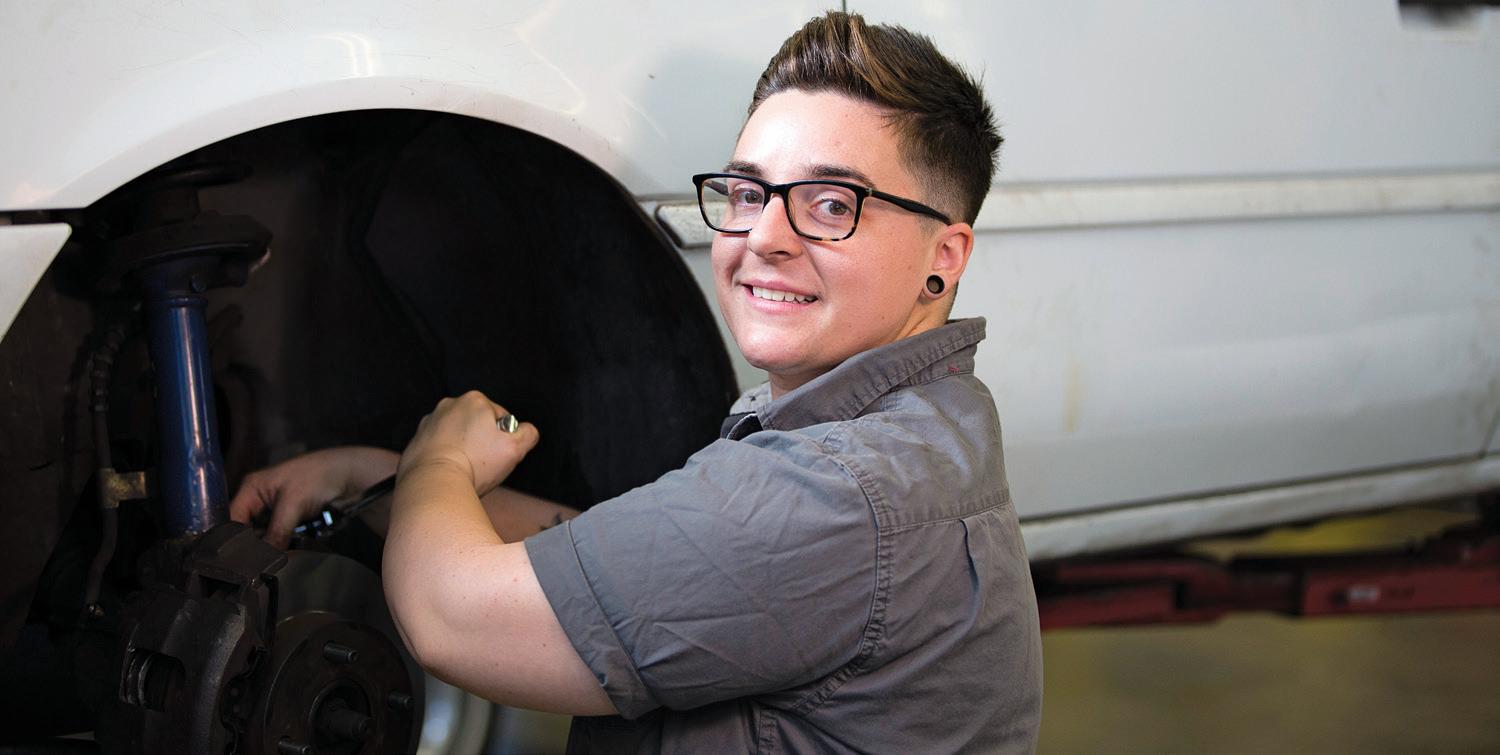
“It’s hard,” Munguia said. “I’m one of two female workers at my garage job and between school and working full time, my daughter is already asleep when I get home.”
Holding a job at Valvoline, an automotive service company, Munguia recounts the satisfaction of proving herself to her male coworkers.
“I could tell going in that they were skeptical of me, but I worked really hard and proved myself and I could see the surprise in their face like, “‘oh, okay, she knows what she’s doing,’” Munguia said.
Also pursuing her degree within Automotive Technology, Munguia wants to hold a government job as the benefits, such as healthcare, can help her support her daughter.
“She’s my world, everything I do is for her,” Munguia said. “I want her to be just like me when she grows up. She already plays with toy cars.”
In addition, Munguia said she encourages other women to at least learn the basics of caring for their vehicle.
“Everyone drives a car and it’s especially important for women to learn how to take care of them because servicemen are twice as likely to assume you don’t know what you’re talking about and try to rip you off,” Munguia said.
Engineering professor and Department Chair of Pierce College’s Industrial Technology branch, Elizabeth Paderi Cheung, estimated that only 10 percent of her department’s students are women.

The field of engineering is male dominated. Only 25 percent of women hold positions within fields of science, technology, engineering and
mathematics, according to the U.S Department of commerce.
“Something that tends to be important to women, is that we want to feel like we’re making a contribution. If you think about professions that are traditionally taken by women, they dominate things like child care, teaching and professions that have a direct impact on someone else’s life,” Cheung continued.
Taking an early interest in math and science, Cheung decided to study engineering in school. She ended up working in the medical field on implements used everyday within the world of medicine.
However, after feeling that her work wasn’t
making much societal impact, she began teaching at Pierce College in 2010.
“I think part of the problem is that since there aren’t a lot of women in the field, others don’t have any role models or women to look up to and so feel dissuaded and left out. The culture isn’t as opening and welcome to women,” Cheung said.
But despite the low number of women working in STEM fields, Judkins, Lopez and Munguia have refused to see their sex as a shortcoming but rather an advantage, all three expressing pride in rejecting gender stereotypes.
“To be able to be successful and prove people who might underestimate me wrong is the best feeling,” Lopez said.
26 | BULL Magazine
Heidi Judkins works on the wheel of a car in the Automotive Technology Building at Pierce College on Thursday, Oct. 26, 2017.
The advanced transmission class at work on transmission systems in room 3600 on Oct. 26, 2017 at Pierce College.
Trixie Munguia works underneath a car in the Automotive Technology building at Pierce College in Woodland Hills, Calif. on Thursday, Oct. 19, 2017.
SHOW UP & SIT DOWN
Story by Victor Rodriguez
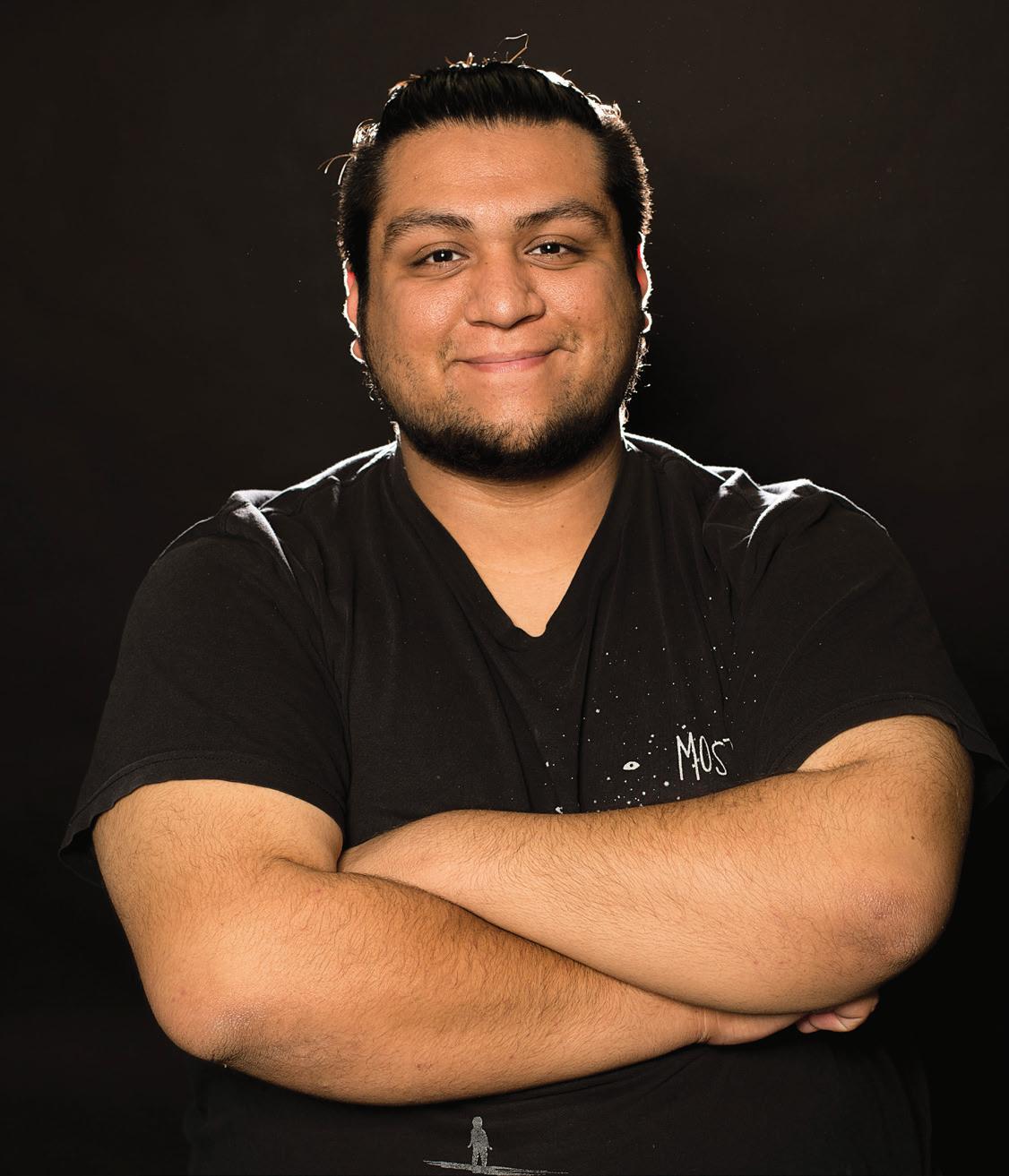
The absolute best way to support women is to show up and sit down.
Exist in spaces where women are sharing their experiences, and in your silence, your conscious deliberate decision to not interrupt or make the conversation sink to your comfort level, you contribute support.
Don’t expect a pat on the back for doing the bare minimum, though. Listen to women, and by listen I don’t mean wait for your turn to talk. It’s not women’s job to educate you. If they choose to do so, be grateful.
Your willingness to care or accept feminism as an ideology shouldn’t depend on whatever random woman you decide should give a sales pitch. There is no boardroom, no power points, no membership rewards, because women aren’t trying to proselytize. You either want to learn or you don’t.
“But how am I supposed to learn if…” I already hear you starting.
And the answer is: On your own. If you are genuinely interested in educating yourself, Google works just fine.
See, we have the privilege of treating sexism like a theoretical, but to everyone who isn’t a man it’s an everyday occurrence.
Demanding that people explain the oppression and pain that they constantly face is mentally taxing and for you to be in a position to hear their firsthand accounts of discrimination and prejudice, then decide you still don’t believe them? That reeks of entitlement. In the age of information, ignorance is a choice.
But let’s be honest here, a lot of the subject matter isn’t only unappealing, it’s downright revolting. To know that women are being harassed, assaulted and killed daily. And by men no less! That makes you want to disassociate or get defensive, it’s only natural, but here’s the rub: if you know a statement doesn’t apply to you, don’t worry about it.
“Not all men,” is shouted by men who desperately want to be seen as nice or different. But what they’re actually saying is “I’m going to assume my anecdotal evidence and limited world view trumps the shockingly similar stories I’m hearing from women around me.”
When you say “Not all men!” you are missing the point entirely. You’re letting your ego suck up all the oxygen in the conversation only leaving room for people to feel bad for you, which sounds exactly like situation that gets women mislabeled with the victim complex.
Trying to empathize with the female experience proves too difficult for many of us. So we hide behind well-meaning statements such as, “Well I have a - daughter/mother/nonspecific-woman-who-I’m-not-currentlytrying-to-bed in my life so I understand,” which only translates to “I have interacted with at least one woman without the ultimate goal being sex so I’m exempt from this,” but the truth is: you shouldn’t need a mother or daughter to understand. Why isn’t a woman’s inherent humanity enough?
As a journalist, I was taught to find the story, to gather all the relevant information available and inform the public. To see if this story has any angles missing, anyone important whose narrative is being excluded.
Now I don’t regret to inform you: men, we’re not as important as we think we are. Sometimes there aren’t even two sides to a story, and your incessant need to play devil’s advocate is akin to a toddler beating their chest like a gorilla insuring that nobody, not even for a second forgets about you.
You know who the devil’s advocate advocates for, right? The devil. This debating technique is supposed to speak for a perspective not currently present or to provoke intelligent discussion and test an argument’s strength, but our perspective is ubiquitous, we don’t need any more unsolicited opinions.
Furthermore the devil’s advocate stance is another instance of men not realizing (or caring) that we get to have these discussions for leisure or this week’s bar room debate and that’s not adding anything to the intellectual zeitgeist that contrarians seem to care about so deeply.
Another obvious yet subtly complex dynamic to consider is that you, a man, will never be a woman. No matter how much time you spend around women or read up on Sylvia Plath and Virginia Woolf you simply can’t coopt these experiences as your own. You’ll never truly know.
Now let’s talk about predatory male feminists. It almost seems counterintuitive, right? These guys are calling themselves feminists, proudly waving the flag so why does it seem like I’m trying to alienate them?
Well, worse than the cliché construction worker yelling about a woman’s “spectacular behind” these men learn all the correct terminology and use it to masquerade their abusive behavior as allyship. It’s obvious and their true intentions aren’t as subtle as they wish.
Now I said all that to say this: nice people don’t have to convince you that they are, or frequently point to their accomplishments, and if you can’t act like a decent person without expecting anything in return then you should entertain the notion that maybe, just maybe, you’re not as nice as you think you are.
Don’t let this tough talk deter you, though. Nobody is asking for perfection from you, my dude.
You are allowed to learn and grow as a human being. You can be a person who has done bad things and strives to do better. And if (when) you slip up, acknowledge it, apologize and learn from it. But do not take advantage of that universal truth, if you fail, make sure to genuinely fail. Otherwise what’s the point?
Now as I’m running out of room some quick reminders before I leave you: The future is female, black lives matter, no means no AND yes means yes, her body her choice,Transwomen are women, healthcare is a right, human beings aren’t illegal, and for the love of God don’t catcall women.
Women’s Issue | 27
Victor Rodriguez, former Roundup newspaper Editor-in-Chief, in the Digital Darkroom studio at Pierce College in Woodland Hills, Calif. on Friday, Nov 10, 2017. Photo: Taylor Arthur
Column:
A pro-feminist piece written by a man, so maybe you’ll listen
Q & A : GOt f#m!n!%m?
Philosophy Professor Paul Hicks Discusses male Feminism and how we view women in society
Quotes Gathered by Vanessa Arredondo and Jose Herrera:
Vanessa Arredondo: How do you define feminism?
Paul Hicks: I define feminism in a couple ways. One, feminism, generally speaking, is the belief that men and women are equal. But that is what I call an inactive feminism.
What we actually should do is have an active feminism. I think for men, especially, who are feminist. Men absolutely need to take part in an active feminism. That is not just the belief that men and women are equal - but what role can men do to change society.
We have rape culture, for example, what role are men suppose to play in rape culture? Men need to actively do something. You can’t just sit passively by the side and do nothing.
VA: Do you consider yourself a feminist?
PH: Yes.
VA: Did you grow up around a feminist ideals?
PH: Yea, my mom actually did her graduate work in philosophy at UC Riverside when I was a kid. She took me to women’s studies departments and talks. I had some exposure to it. But, I also had exposure to it from my dad’s side of the family as well, which was not college educated people. It was when the idea that women shouldn’t have jobs was very present and that women are there to cook dinner, do the laundry, not work and take care of the kids.
VA: Were there any motivating factors that made you decide to be a feminist?
PH: Rape I think is a big one. I hate the idea of rape.
The fact that I try not to look at women as object. I am a heterosexual man raised in a very patriarchal society. So, I am never going to say that I have never done it or I am never going to do it again. But, I really do believe that women are people. And that condition makes me a feminist.
I read this book by Susan Brownmiller called “Against Our Will.” In there she tracks the entire history of what rape is. It is a really hard book to read.
I was raped when I was younger so I can really empathize a lot with women who are raped now. It is not that men aren’t raped it is just clearly men tend to be the aggressors of rape and women tend to be the victims of rape.
People I love have been raped - in very horrific, horrific ways. I want to end that.
VA: Is there such a distinction as male feminism?
PH: Yes.
Men actually have to do something. The idea is that every time you have an oppressed class - you have what is called the double bind. This comes from the feminist philosopher Marilyn Frye.
Essentially, what a double bind, is a dammed if you do, dammed if you don’t situation. If you are in fact a member of an oppressed class your options are limited. In either way you choose you end up getting negative consequences. So, the question is: Are women oppressed?
I think that is a pretty clear yes. Certainly not as oppressed as it used to be. But, it is still a patriarchal society and there is still a lot of misogyny out there. So, who is doing the oppressing? Men are.
One of the things that really helped me come to feminism is I heard women’s positions and women’s studies and that was part of my upbringing. It wasn’t until I actually heard men talk about feminism. People like Robert Jensen, for example, until they actually started saying that feminism is important to men too, that I actually took it seriously.
What I think that shows is that I discounted women’s views. I do think that is very sexist and I was sexist for doing so. It shows that we hold men’s ideas to a higher standard. I think men need to take an active role because men as a group are the ones that are doing the misogynistic and patriarchal acts. So, I think it is perfectly right for a man to question other men and to try to hold other men to be accountable towards feminism.
VA: So, what is the women’s responsibility?
PH: I try not to answer that. I don’t get to decide what it is like to be a women in this society. I can only read in books about what women have written. It is not the place for men to tell women how to deal with feminism, how to react to the women’s movement. Men have taken over movements for so long.
There is this problem I think in feminism where we see men trying to take over the movement and say, “this is how you actually do it”’ That is just patriarchy in and of itself. You are just going into the movement saying “alright women, step to the side let the men take over.”
VA: How do you feel when you encounter men who do not take on a feminist view and are routinely demeaning to women?
PH: I tend to hang out with a lot of feminist people. But, I would call somebody on it.
For example, if a student says the words chick or bitch in my class when they meant woman - I am going to call them out on that. If I ever hear a man say something like that, I am going to speak up.
That is another thing about being a man and being a feminist. Men are the ones that need to take the active role. Men have to police other men. When I hear another man do it, I tell them what’s up. I try to do it in a nice way.
I am not trying to be mean - I am just trying to educate.
VA: Are there specific terms or language within our society that we use
28 | BULL Magazine
every day to talk about women that is demeaning or male chauvinistic?
PH: Yes.
So I teach a paper on this by Robert Baker and it is entitled ““Pricks” and “Chicks”: A plea for “Persons.”” Baker asks if you take a statement: “look at that woman over there,” and you take the word ‘”women” out and replace it with the word that we would actually use what is it we are going to get.
Women typically say: sister, female, something very neutral. Men on the other hand, the top five are: chick, bitch, slut, whore and cunt. For men, calling a woman a chick or a bitch, they don’t think about it as being demeaning. But it certainly is demeaning. When you look at all the words we choose to identify women, they are all subservient to men. Every single one of them.
I don’t think that is a coincidence. I think it really uncovers our deeper conceptual framework and what we think about gender.
VA: How about when we talk about sex? Does society talk about women as if they are sex objects?
PH: We certainly objectify women. There is no question about that. I think the way we think about sex as well is also a problem because, in that exact same paper by Robert Baker, he puts out there different terms we use for sex.
He gives the example, say you and a group of friends go out to a club on a Friday night. Two of your friends Jack and Jill leave the club to go home and have sex. You meet the next morning for brunch and you wanted talk about what Jack and Jill did. So, how would you actually say it?
The typical words we are going to use are: screw, fuck, had, did it to, banged - something along those lines. What we find with all the words like that are that men are active and women are passive. That is, to say “Jack fucks Jill” is not synonymous with “Jill fucks Jack.”
In the ones where men have to be the active one actively participating in it - all of those words are also synonymous with harm. Every single one of them.
VA: Do men find it easier to think about women in a demeaning way in a group
PH: If men are just hanging out with other men? Yes, I absolutely do. I think there is no doubt about that. I have been in locker rooms and I have been around just men. I know how just men talk about women when it is just men around. That is what I am talking about. Men need to hold each other accountable. The things that men tend to say when women are not around, it’s pretty demeaning.
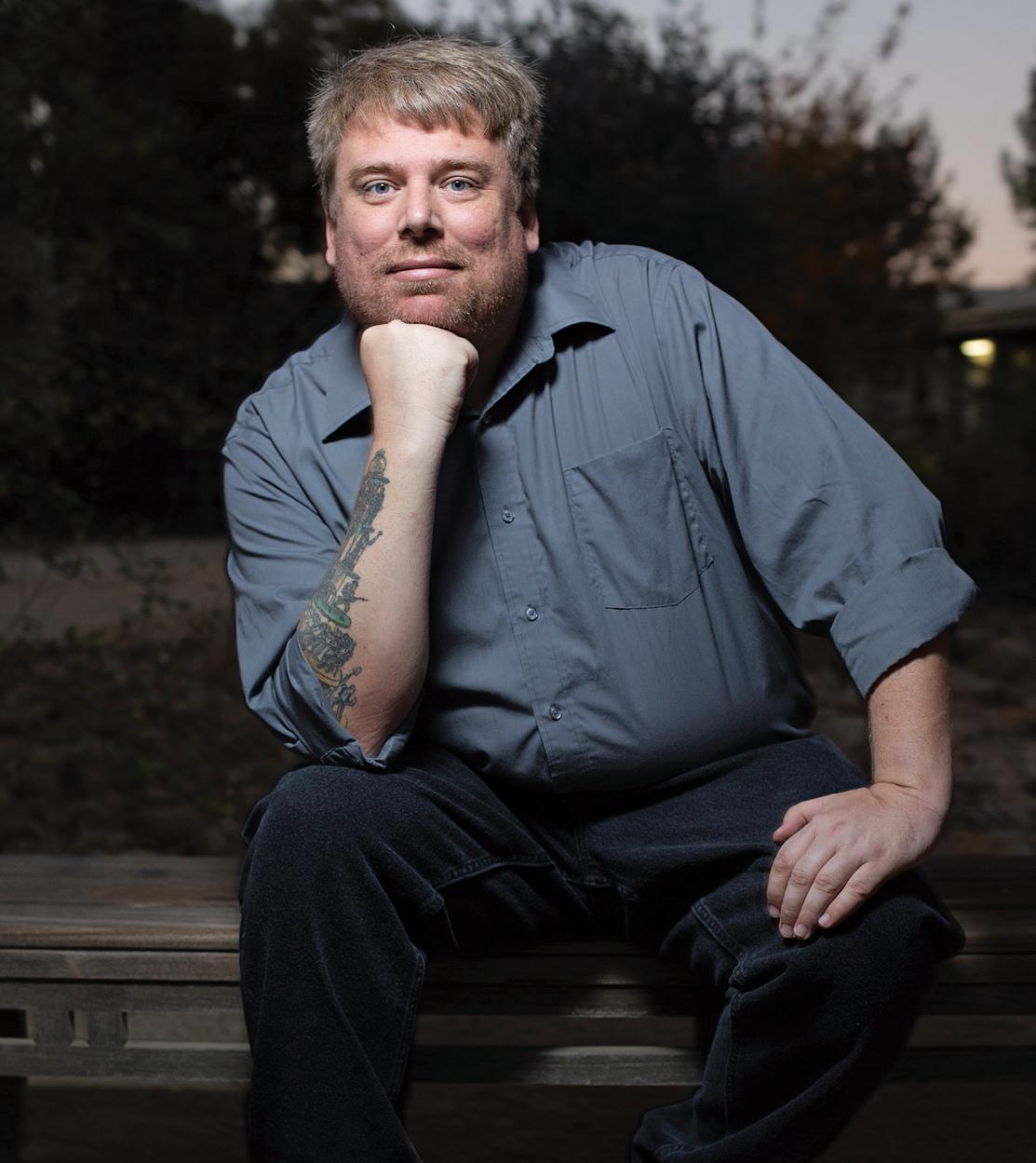
VA: Why do you think this language is so common?
PH: I think it is because sexism is still so common. I don’t think that we see men and women as equal at all. I think that we are moving toward that direction and I hope to see it someday. But, we are not an egalitarian society at all.
Until we actually stop looking at women as sex objects or categorizing women as “doable” or “not doable,” or saying things like “oh, I’ve been put into the friend zone” or something like that. Until we get beyond all that stuff - I don’t see how we can ever move forward.
Because, God forbid if a women could have an autonomous free will and just decide not to sleep with you. Right?
VA: What are the right terms to use when we refer to women in society?
PH: Women. That is the right word to use.
I mean, if she is under 18, “girl” would be acceptable. “Lady” is sometimes is acceptable but I don’t like that word. it has a class connotation to it. When we think about somebody being a lady, we’re thinking about her as being upper class. When we think about a homeless women we don’t go and think “we’ll that’s a Lady.” It’s a women.
VA: What are some good resources for men to refer to if they want to educate themselves on why men should embrace feminism?
PH: I think that men need to actually shut up and listen to what women are actually trying to say. There are some good feminists out there now.
Jessica Valenti, for example. She has a book called “Yes Means Yes.” It is a collection of articles. Pamela Paul is a good one.
I think what men need to do is to really try and stay away from other men explaining what feminism is and retry to pay attention to what women are explaining what their experiences are. That is what men really need to do.
Read Susan Brownmiller. Read Simone de Beauvoir a “The Second Sex.” Read Betty Freehand. Actually start reading articles written by women about women’s experiences.
VA: What is a productive way to encourage young men to talk about feminism and embrace it without being embarrassed or intimidated by the topic?
PH: I think in a college setting is perfect. That is what a college classroom is suppose to be - actually taking issues that people are dealing with and critically analyze them. Go up there with some sort of authority on your knowledge. Know what feminism actually is and show men how we are raised and how it is that we are raised to be patriarchal and misogynistic.
For example, one of the things that men need to do is to actually refuse to be men. What does it mean to really be a man? One of the things is to harm women. To be this independent, we don’t really need anybody kind of nonsense. We all interconnect and we all do need each other.
I would teach men how it is to be a man. Then I say stop trying to be a man. Stop trying to obsess over pornography for example. What are you doing when you do that? You are obsessing over women as sex objects. What are you watching? What are you really looking at?
If you were to stop masturbating while watching pornography and just look at what really is happening there, it’s really fowl it’s disgusting. [Ask yourself] how does that infiltrate your mind? Because it does. How are you going to shut that off?
You have to stop trying to be in control. Stop trying to tell women what they should like. Stop expressing what you think women should feel. It’s not our place.
[ For a full version of the interview visit: thebullmag.com ]
Women’s Issue | 29
Philosophy Professor Paul Hicks sits in the Botanical Garden at Pierce College on Thursday, Nov. 9, 2017, in Woodland Hills, Calif. Photo: Taylor Arthur
A NewWay of Life
How a Formerly Incarcerated Woman, is Helping female inmates Re-enter Life after Prison.
The sky was painted in cloudy feathers of orange and pink lace thinning and fading its blue into the setting coastal sun.
It was a September afternoon, the first early evening in Los Angeles to show the face of fall. A crowd of people ebb and flowed, and through the center of the crowd, and the voices and the buzz, stood Susan Burton echoing a warm and effusive laugh. The heaviness of her sincere joy ricocheted off the surrounding structures of Loyola Marymount University.
Burton founded A New Way of Life, as a non profit organization focusing on formerly incarcerated women re-entering society after prison.
About 20 years ago Susan Burton was unemployed, without money or a place to live. She had just finished her sixth prison term, each for non-violent offenses and drugs.
Upon exiting, a prison guard told her he’d see her back soon. The words stung. She knew he could be right.
Burton was stuck in a vicious cycle of physical and sexual abuse, grief, and addiction. She would get arrested then released to the same community, same relationships. Without resources she didn’t know how to successfully live after a felony on her record, she was lost.
“I didn’t make a choice, the environment made it for me. I responded to the environment,” Burton said. “I had options, but not a real choice.”
It was difficult to get housing and a job with a felony. Eventually, past traumas and griefs would consume her need to get clean, and she would fall back to using, and placed in prison again.
According to Human Rights Watch, nearly 80 percent of formerly incarcerated women in the United States are unable to afford housing after release. Most public housing authorities automatically deny eligibility to anyone with a criminal record.
“I sat behind bars with no hope, and came out each time, angry and demoralized and primed to reoffend,” Burton wrote in her book “Becoming Ms. Burton.”
Determined not to go back to prison and
proving the guard right, Burton found a rehabilitation center in Santa Monica that would provide a bed and help with her addiction to alcohol and crack cocaine. She got clean and decided to bring this type of rehabilitation to women in her community of South Central.
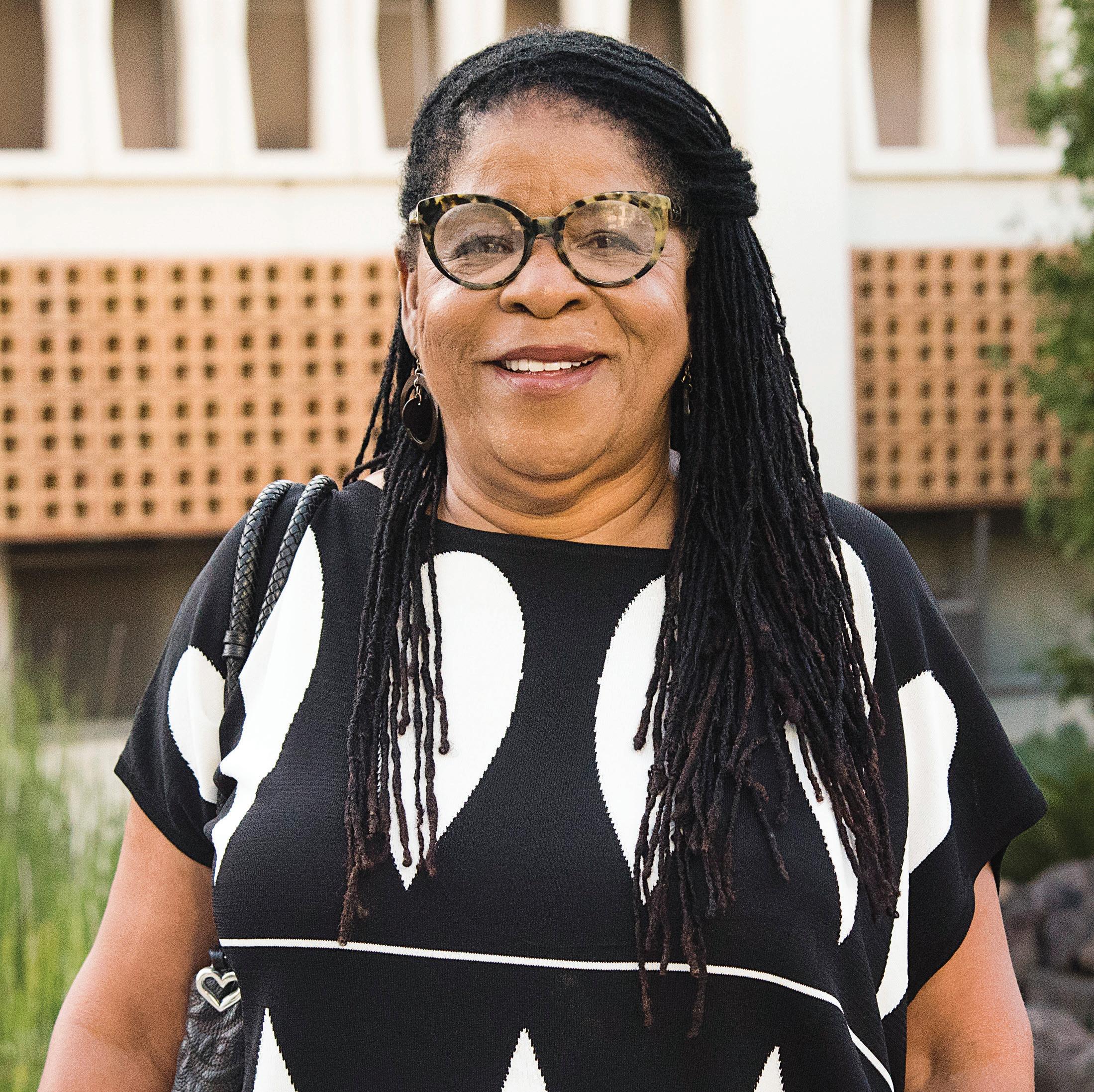
“I was so angry, so angry, and anger turned into courage,” she said.
“I felt like there was nothing else that could be done to me. And, if I didn’t go for it now it wasn’t gonna happen,”
Part of the 12 Step program is a living amends. This is where the person seeking sobriety lives a completely new lifestyle for their self and for those harmed by the addict’s former behavior. Inspired by a living amends, to create restitution and to help other women.
“A living amends works. I am amazed over and over again with what can happen when one person reaches out to help another person. I wanted to pay it forward and give other women a hand up,” Burton said.
Burton began by waiting at the Greyhound bus station in downtown Los Angeles for women being dropped off after being released. She
would then offer women a bed and a clean home to live in, as long as they were willing to go to recovery. Little by little, she filled the beds of the three bedroom home that now boasts a 99 percent success rate.
“We create a place for women to heal themselves,” Burton said. “That’s better than them being pushed out in the street to incur more trauma.”
Karen Hernandez has been in the program for nine months. The recommended span of the program is six months, but Hernandez needed more time, and the organization complied. Hernandez had left prison after finishing a sentence for assault with a deadly weapon and great bodily injury.
She heard about A New Way of Life through another inmate and was the only organization that responded after writing to five different programs. They accepted her and told her a bed was waiting, and she was very grateful.
Celina Lopez, a young quiet girl with green eyes, has been in the program for only a month. She was recommended by one of her drug counselor after she completed a six month prison
30 | BULL Magazine
Susan Burton stands outside in the courtyard at Loyola Marymount University while she attends the Justice on Trial film festival on Wednesday, Nov. 8, 2017, in Los Angeles, Calif. Photo: Magdalena Bleu Briggs
Story by Magdalena Bleu Briggs
Photos by Magdalena Bleu Briggs and mohammad djauhari
sentence for armed burglary. She has a four year old son and is in the process of regaining custody.
“It was difficult before, living from shelter to shelter, but now that I have stable housing and they are helping me to be able to get my son back.” They are helping Celina with reunification,” said Lopez. “Anything that I ask, like parenting classes or counseling, they have been helping me with it.”
According to the ACLU, since 1980, the number of women in the US prisons has increased by more than 700 percent and has outpaced men by more than 50 percent. Between 1986 and 1999, the number of women incarcerated in state facilities for drug related offenses alone increased by 888 percent.
Los Angeles based criminal defense attorney Oscar Acevedo has seen recidivism grow in his 12 years in the field.
“In the cases I’ve seen, it usually has to do with drug addiction. Addicts get busted a lot not just for possession, but for theft crimes to support their addiction,” Acevedo said. “In gang cases, it has more to do with the lack of structure at home. Sometimes it’s multi-generational.”
Women face tremendous barriers re-entering life after prison. Acevedo agrees that a post release support system to help them get back on their feet and woven back into society is necessary to help women succeed in leading a productive life.
“Better drug treatment and availability of drug treatment would go a long way to curb this problem,” Acevedo said.
“If people can get an opportunity It would help change them,” Burton said. “It’s a lack of opportunity that has people making desperate choices. And I believe if there was opportunity offered to folks that would really transform them so much,” Burton said.
Burton said she has been sober for 20 years, and has worked to help women heal. But she began by healing herself. She had to face trauma of sexual and physical abuse in her past and the grief of losing her son.
Burton lost her 5-year-old son when he was struck by a car driven by an off-duty police officer, according to her book. She lost herself to the hole in her heart and the desperate feeling of being powerless of getting justice in the death of her son. According to her book, she didn’t even get an apology from the LAPD.
After many years of healing, Burton said she has forgiven those that hurt her in the past.
“I had to make space to go inside and forgive. That freed me up to have the love and patience to extend myself to allow to be a tool for healing,” she said.
A representative from A New Way of Life claims about 600 women have come through its doors and the organization claims a 98 percent success rate. Burton has seen many changes
and growth. She went from being a victim to an offender, from a prison GED to a college graduate, from an advocate to receiving the CNN Hero award in 2011. Burton still runs the organization, traveling the world speaking on opportunities for the formerly incarcerated.
“After 15 years, and in my early 60s, I began to think seriously about what would happen after I retired,” Burton said.
Tiffany Johnson. Johnson was the first lifer to come through the doors of A New Way of Life. After she completed a 16- year prison sentence for murdering the man who molested her as a childher mother’s boyfriend.
It is estimated that as many as 94 percent of incarcerated women have experienced physical or sexual abuse in their lifetime, with some studies noted rates of trauma histories as high as 98 percent, according to the American Civil Liberties Union.
Even though Johnson had years of experience as a master solderer, her murder conviction made her unemployable.

Burton saw potential in Johnson and grew to depend on her. Now she is the associate director and current community organizer and the future ahead of A New Way of Life.
“Women are so unique as a whole. The prison system and criminal justice system was basically built and structured for men. We are the sole caretakers in our communities,” Johnson said. “Children are being stripped away sent into Department of Children and Family Services, basically starting their lives in the criminal justice
system. Women come home, and we as women have to try to bring our families back together, create a family, built that bond back. It is not easy.
According to Johnson, replications of the organization are being created in different communities and states around the nation because it is needed. Most recently, The Hope House in New York celebrated a grand opening and is their first replication model. It is also run by formerly incarcerated women.
“Our fabric in a New Way of Life is focusing on the trauma. Helping women to decriminalize themselves, take down the walls and get free is so important,” Johnson said. “You can’t do that until you deal with all the past trauma that you’ve been through.”
After many years, Susan Burton did return to prison, but this time as an invited speaker. Upon entering, she saw the old prison guard that had told her all those years ago “You’ll be back.” This time Burton knew she was back by choice, for a higher purpose and most importantly, that she was free to leave.
At the Justice on Trial Film festival held at Loyola Marymount University in El Segundo Calif., Burton looked happy and energetic with a casual cool. With a smile wide and bright, among the sounds of the DJ and the murmurs of the crowd, she graciously sat and enjoyed the turn out.
A sheepish student approached her to ask a question. She paused to sing “Rise Up,” by Audra Day which played loudly on the speakers.
“I’ll rise up
Rise like the day
I’ll rise up
In spite of the ache
I will rise a thousands times again”
The song was kismet. The lyrics paralleled the sentiment of the formerly incarcerated women and activist that attended the film festival.
She laughed hearty, with joy, tossed her long braids to the side as she straightened her glasses with one hand, crab cake in the other.
“Go after your dreams concretely. Don’t let your dreams go to sleep. Massage your dream,” Burton told the student.
Women’s Issue | 31
I was so angry, so angry, and anger turned into courage
-Susan Burton
Tiffany Johnson sits in the home office Susan Burton has turned into A New Way Of Life on Tuesday, Oct. 31, 2017, in Los Angeles, Calif. Photo: Mohammad Djauhari
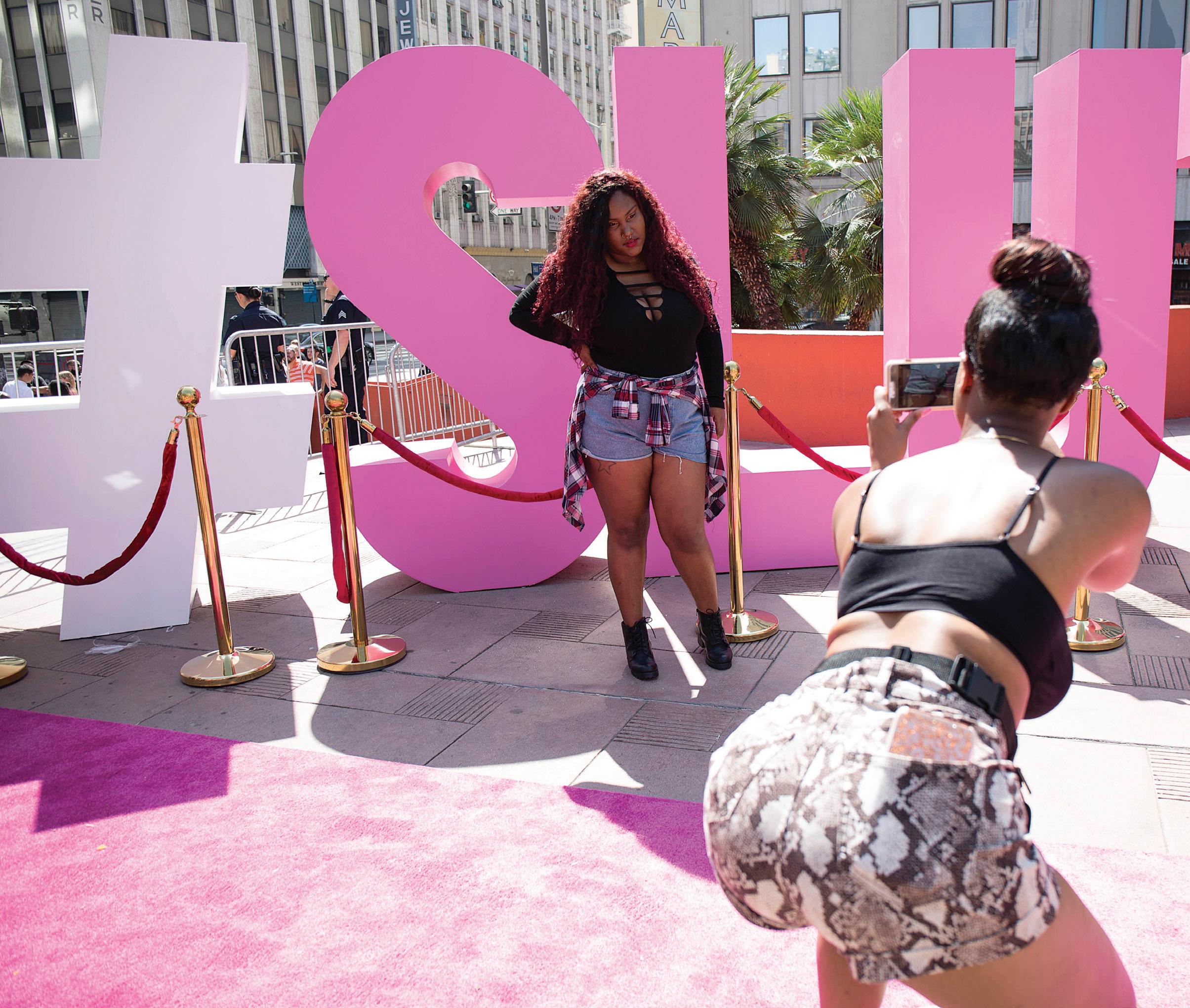
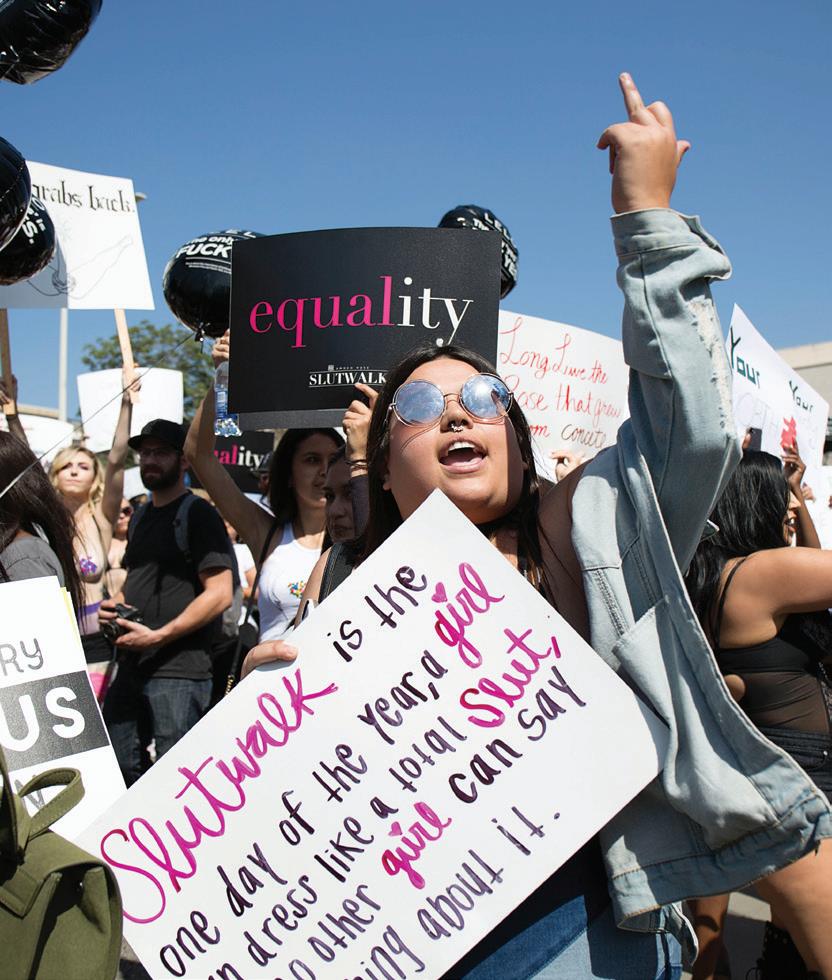

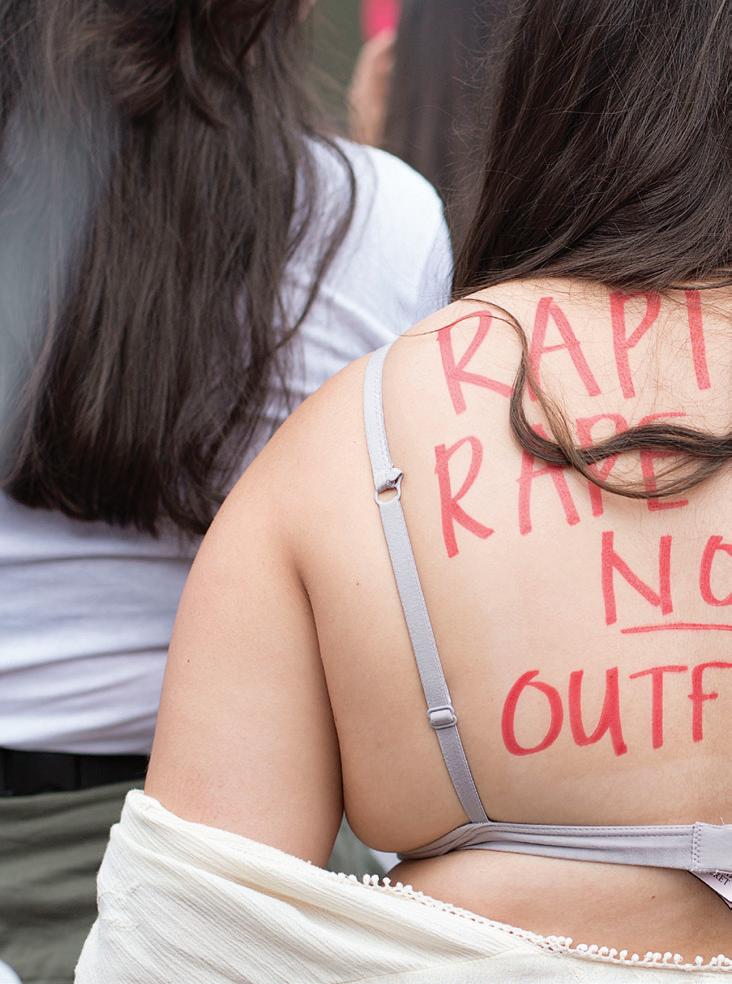
32 | BULL Magazine
Two women take photos in front of the #Slut display at Pershing Square after marching in the Amber Rose Slut Walk in Down Town Los Angeles, Calif. on Saturday, Sept. 30, 2017.
Left: A women gives the middle finger to counter protesters during the 2017 Amber Rose SlutWalk in Downtown Los Angeles, Calif.
Above: Marchers hold signs and walk toward Pershing Square for the Amber Rose SlutWalk.
Walk
LA rallies against slut shaming
Michael Sanguinetti, a Toronto Police Constable, said “Women should avoid dressing like sluts in order not to be victimized” after a rape at the city’s campus of York University. That statement started a worldwide movement known as the SlutWalk.
Founded by Sonya Barnett and Heather Jarvis in 2011, the movement was started to combat the harassment and practice of victim blaming after cases of sexual violence, and from its initial event that drew more than 3,000 supporters, the SlutWalk has grown to have satellite events in major cities across the world including Chicago, Melbourne and England.
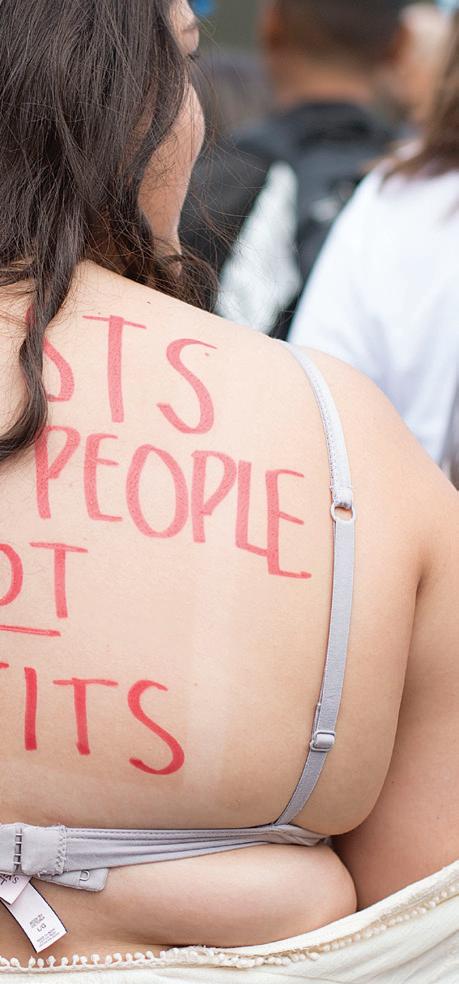

The Los Angeles SlutWalk, also known as the Amber Rose SlutWalk, is organized by celebrity and feminist Amber Rose, has taken place since 2014 in Downtown Los Angeles and consists of a march through the area, ending at Pershing Square, where a rally and festival takes place. This year’s event attracted more than 15,000 people of all ages and backgrounds.
Though the [Amber Rose] SlutWalk aims to advocate for women’s right and the end to “slut shaming” and rape culture, the event also offers live music performances, educational booths, free breast cancer exams and HIV testing, as well as various guest speakers.
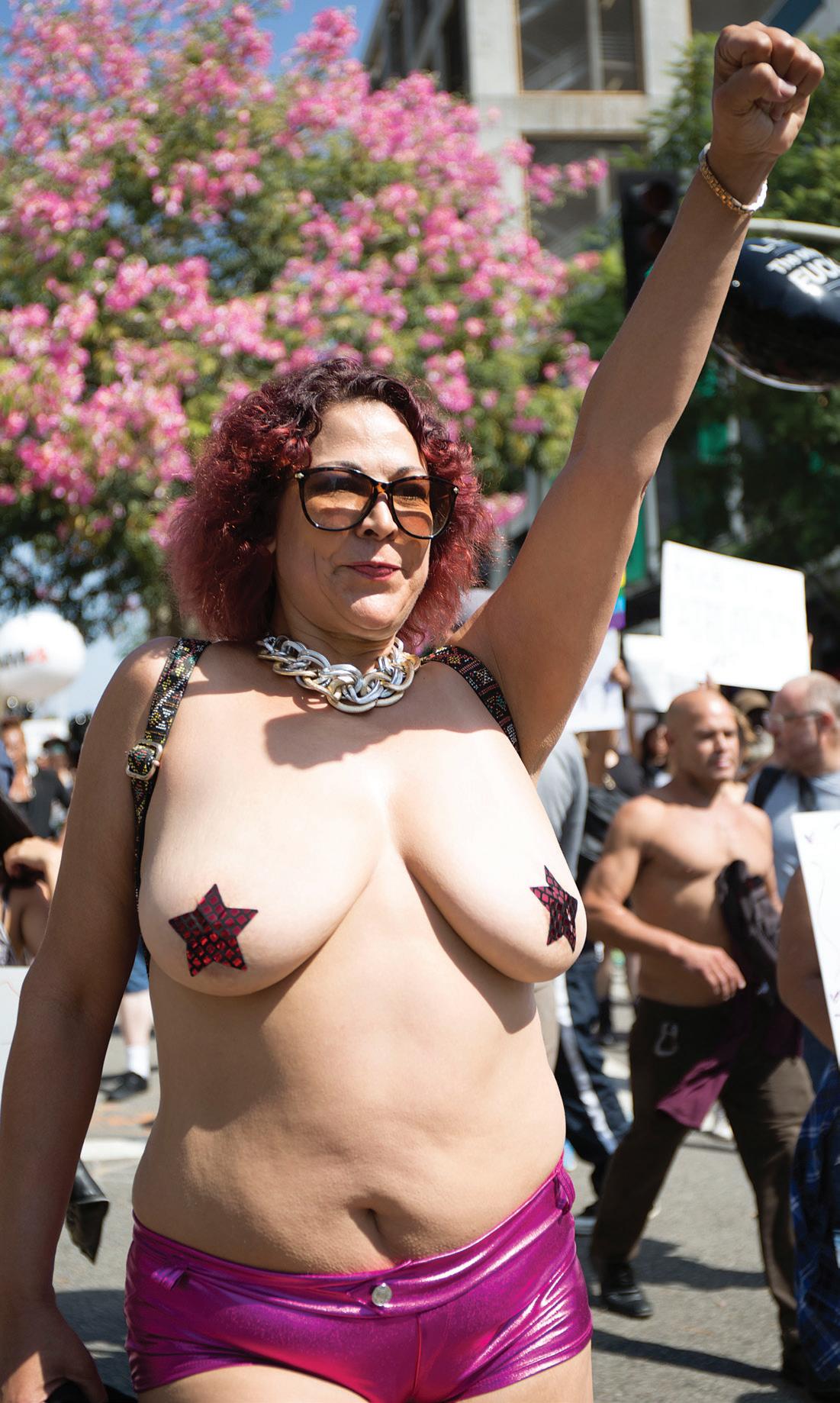
Women’s Issue | 33
Left: A woman holds her fist up as she marches in the 2017 Amber Rose SlutWalk in Downtown Los Angeles.
Story by Mohammad Djauhari photos by Taylor Arthur
Left Center: A woman with a message on her back stands near the stage of the 2017 Amber Rose SlutWalk.
Bull Staff Fall 2017



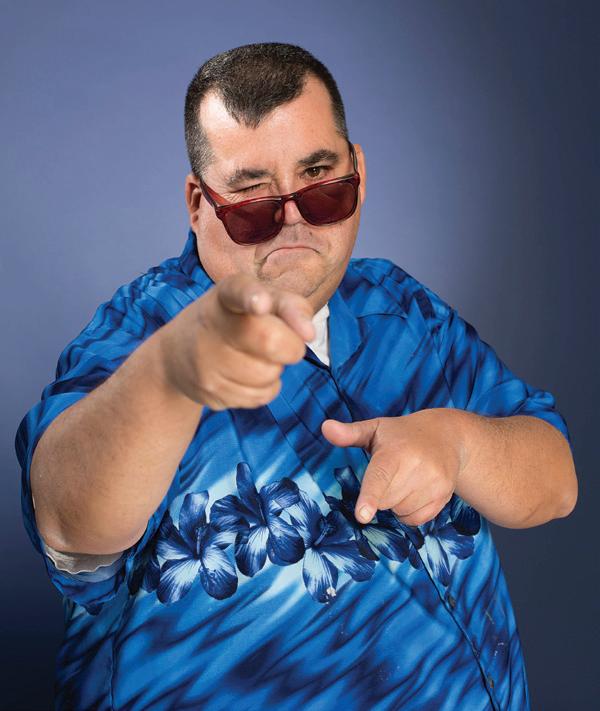
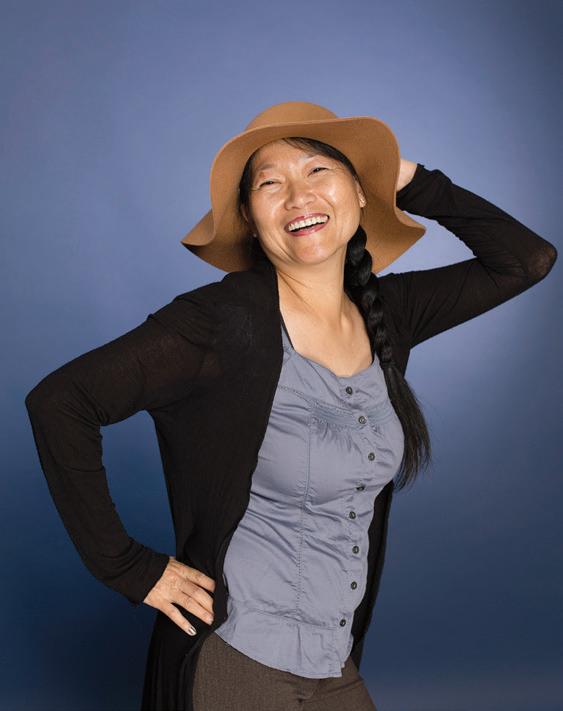

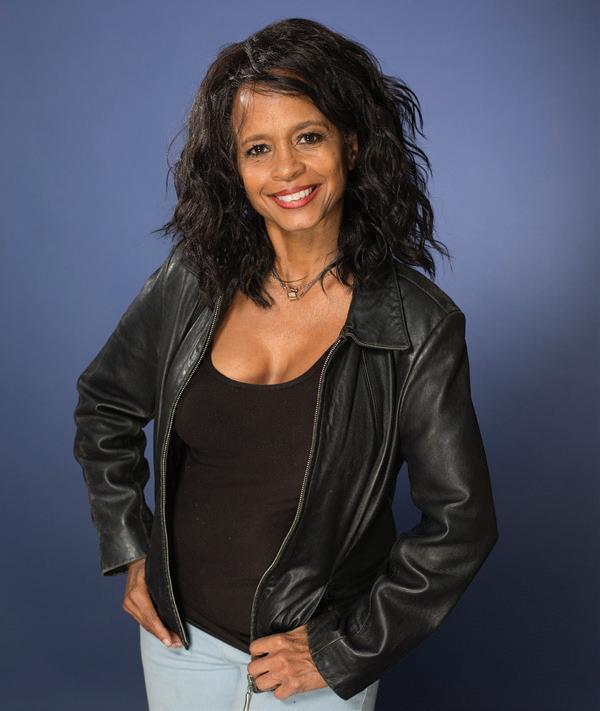

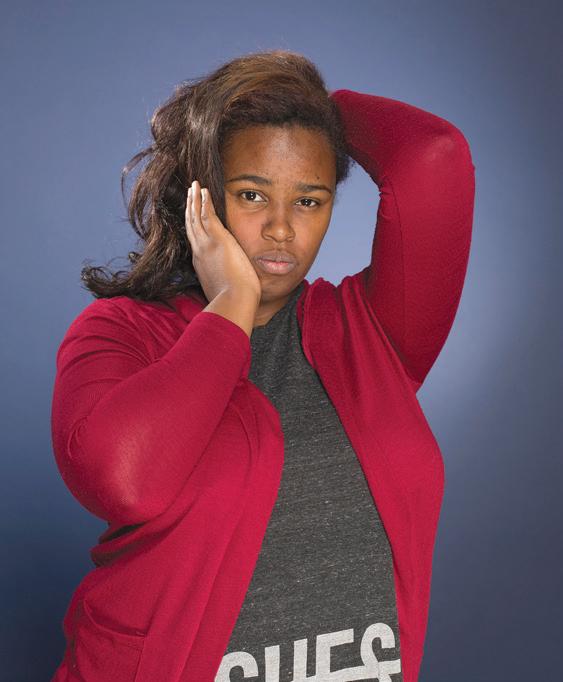
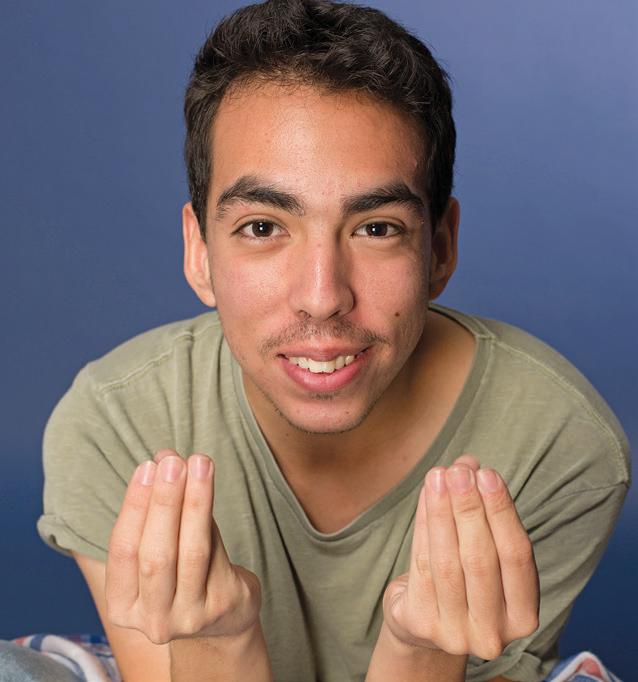

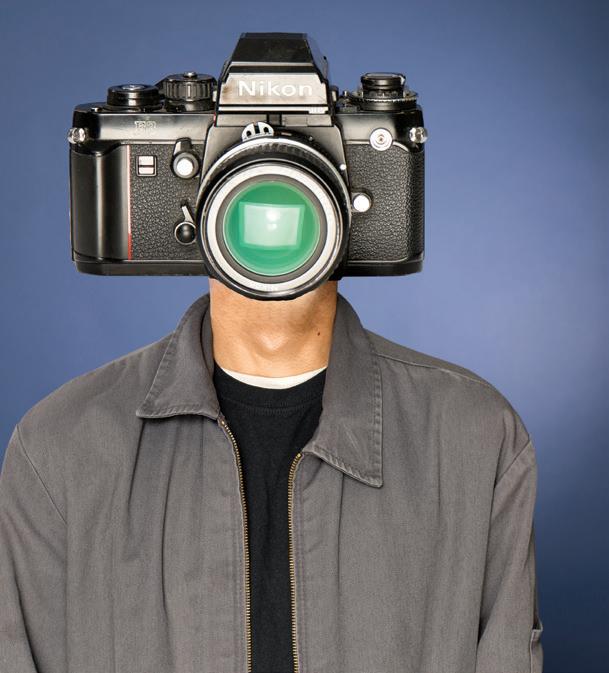
34 | BULL Magazine
Natalie Miranda Reporter
Magdalena Bleu BRIGGS Reporter/photographer
Laura Chen Photographer
Felipe Gamino Reporter
Richard Espinoza Jr. Reporter
Reza Razi Photographer
Jennifer Belcher Reporter
Bridget Barnett Reporter
Randi Love Roundup Photo Editor
Joshua Manes Copy Editor
Mohammad Djauhari Managing Editor
Jose Herrera Social Media Editor
Not pictured: Zoe Parker (reporter) and Marc Dionne (Online editor)
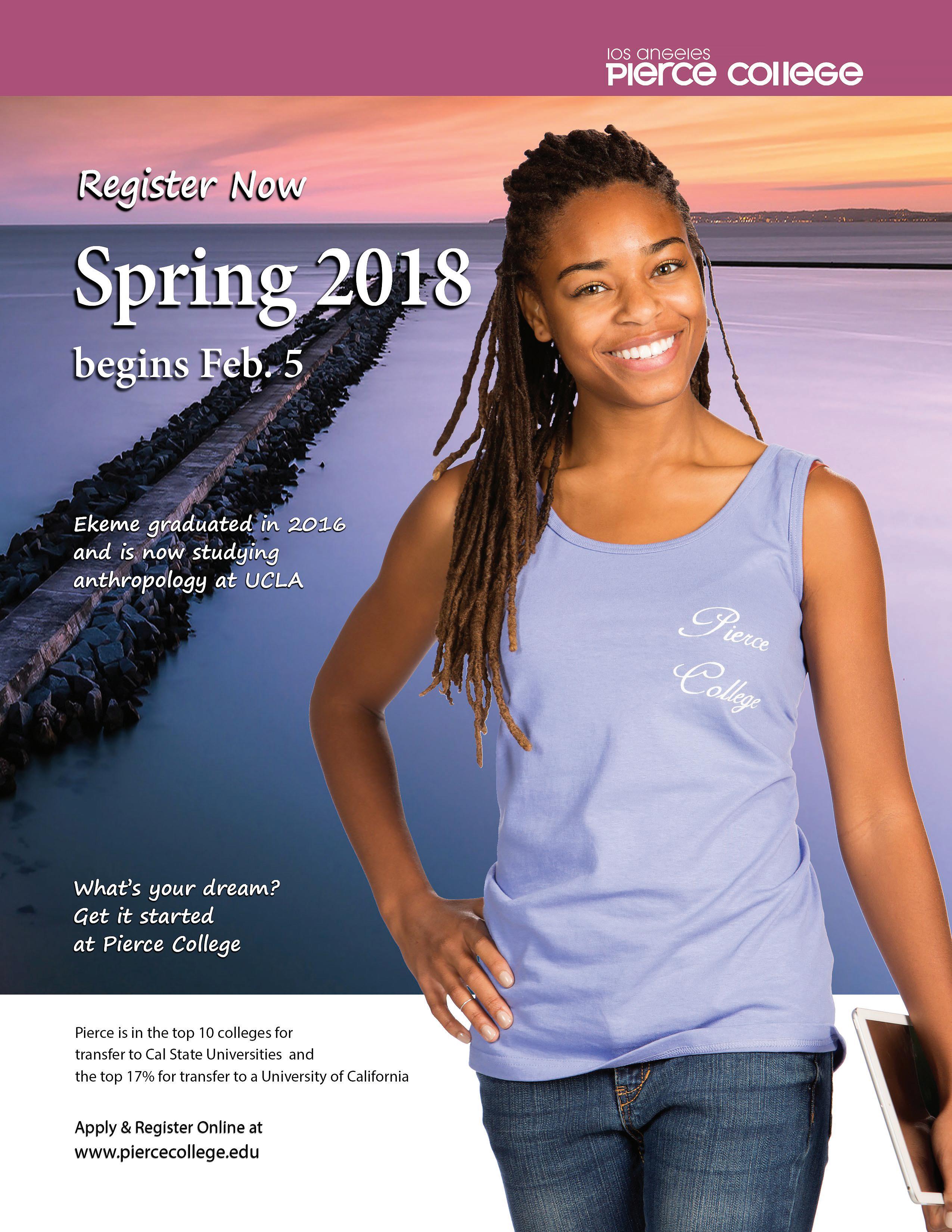



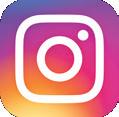
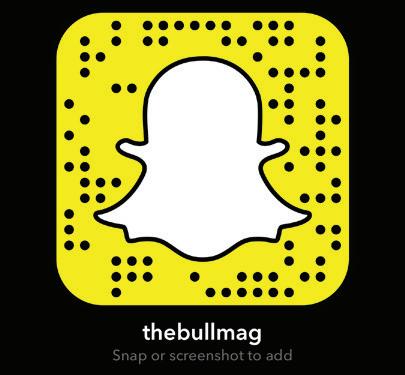
www.thebullmag.com @bullmagazine @thebullmag @thebullmagazine





 -Taylor Arthur / Editor-in-Chief
-Taylor Arthur / Editor-in-Chief









 Story by Joshua Manes
Story by Joshua Manes
 Photos by Taylor Arthur
Photos by Taylor Arthur


 Ruby Raze prepares to use a chair in the main event at the Santino Bros. at the Downey Elks Lodge in Downey, Calif.
Ruby Raze delivers a German suplex to Tyler Bateman in the main event at the Santino Bros. Wrestling Heavy is the Crown event at the Downey Elks Lodge in Downey, Calif., on Friday, Sept. 22, 2017.
Ruby Raze prepares to use a chair in the main event at the Santino Bros. at the Downey Elks Lodge in Downey, Calif.
Ruby Raze delivers a German suplex to Tyler Bateman in the main event at the Santino Bros. Wrestling Heavy is the Crown event at the Downey Elks Lodge in Downey, Calif., on Friday, Sept. 22, 2017.



 sTORY BY Natalie Miranda
Photos by Magdalena Bleu BRIGGS
sTORY BY Natalie Miranda
Photos by Magdalena Bleu BRIGGS

 Story by Randi Love
Story by Randi Love



 Story and photos by Taylor Arthur
Story and photos by Taylor Arthur














 From left to right: Alexis Casa, Natalia Angeles, Jacqueline Arellano, Dolores Loaezd, Kirsten Tapalla and Mary Reyes, students of the Digital Promotores class, stand in front of photos from a previous exhibit at Las Fotos Project gallery in Lincoln Heights, Calif. on Saturday, Oct. 28, 2017.
From left to right: Alexis Casa, Natalia Angeles, Jacqueline Arellano, Dolores Loaezd, Kirsten Tapalla and Mary Reyes, students of the Digital Promotores class, stand in front of photos from a previous exhibit at Las Fotos Project gallery in Lincoln Heights, Calif. on Saturday, Oct. 28, 2017.

 Story by Zoe Parker
Photos by Reza Razi
Story by Zoe Parker
Photos by Reza Razi
































